TAKING AK G NG T TAKIN INTAAK PLANNING A NIN P PL N L PLANLANN
FORWARD RWAR FOR RD D O WAR FORWAR
PhD research projects on the centenary of the Bartlett School of Planning 1914-2014
Foreword by Professor Sir Peter Hall


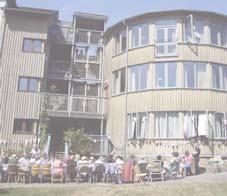
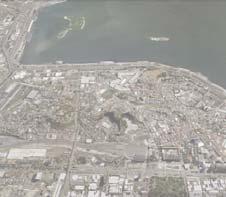
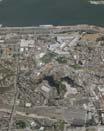
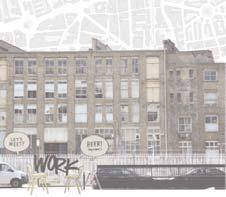








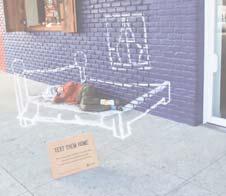

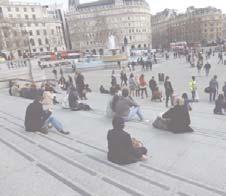




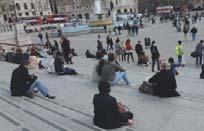




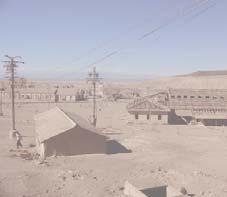
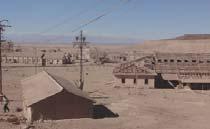



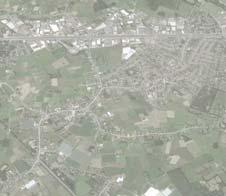
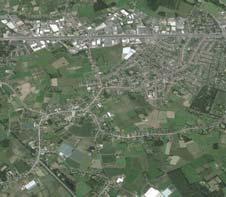


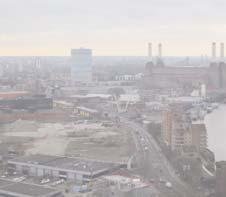




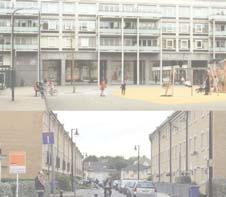
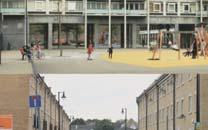






Contents
The Bartlett School of Planning .........................................i
Foreword _ Professor Sir Peter Hall ..................................ii
Preface: Taking Planning Forward _Rodrigo Cardoso .....iv
1. Invisible City. A Multisensory Approach to Spatial Planning and Urban Design _Alexandra Gomes ..............2
2. Strategic Intensification of Polycentric Cities, Examining the Catalytic Regeneration Potential of Urban Rail Projects _Brian Garcia ...............................................4
3. Beyond State and Market: Civil society and the coproduction of project governance _Dan Durrant .........6
4. Between Co-operation and Commons: the Case of Collective Housing in UK _Daniel Fitzpatrick ...................8
5. What is inner east London? _Ed Jones ......................10
6. Shaping Imaginary Geographies into Inclusive Cities. Approaching Design for the Homeless _Elisabeta Ilie ..12
7. Urban Form in Taiwan.Taipei City: A Case Study _Feng-shu Chang .............................................................14
8. Planning Models and Policy Mobilities: Urban planning in Rio de Janeiro in the age of mega-events _Gabriel Silvestre ............................................................16
9. The Underlying Forces Behind the Increasing Trend of Consolidation Between Urban Development and Finance: The case of the Saint Denis Plain urban regeneration in Paris _Jae Kwang Lee .....................................................18
10. Public Space as a Functional Possibility _Ji Hyun Kim ....................................................................20
11. Understanding Material Participation in “Event-ual” Urbanism _Jorge Martín Sainz de los Terreros ..............22
12. Placing the Digital Economy: the Spatiality of Work in ‘Tech City’, London _Juliana Martins .............................24
13. Local Government’s Fiscal Arrangement and Urban Change, A Case Study of Tehran _Katayoun Karampour ....................................................26
14. Multinational Corporations and Regional Development: Bargaining Power and its Spatial Outcomes in the Chilean Mining Global Production Network _Martín Arias ....................................................28
15. Clusters of Ownership in London: Real Estate Value and Governance _Patricia Canelas ................................30
16. New Identities of the Extensive City: Metropolisation Processes in European Second-tier Cities _Rodrigo Cardoso .............................32
17. 18. Vacant Urban Land: a Production Process in an English Context _Sonia Freire Trigo ................................34
18. Social Interaction in Mixed-Tenure Neighbourhoods: a Comparative Analysis of Urban Regeneration in the UK and in the Netherlands _Tatiana Moreira de Souza .....36
19. Gated Communities in China_Tingting Lu ...............38
20. London 2012: Legal Geography of Olympic Place Marketing _Xianlu Bai .....................................................40
21. Time Reveals Truth: a Retrospect of the Redevelopment Case of Urban Village in Xi’an China _Xiaoqing Zhang ..............................................................42
22. Local Politics Transformation and the Governance of Flagship Culture-led Redevelopment in China _Yixiang Sun ...................................................................................44
23. Neighbourhood Attachment, Neighbourly Interaction and Community Participation within the context of Urban Village Redevelopment: A Case Study of Guangzhou, China _Yuqi Liu ................................................................46
References .......................................................................48
Credits ..............................................................................53
The Bartlett School of Planning
The Bartlett School of Planning is a world centre for learning and research about the form, planning, design and management of cities. Our location, history and expertise have made our programmes and research among the most stimulating and sought-after in the field of planning. We are part of The Bartlett: UCL’s global faculty of the built environment.
BSP staff currently supervising PhD candidates:
Dr Sonia Arbaci / Professor Matthew Carmona / Dr Ben Clifford / Dr Claire Colomb / Professor Harry Dimitriou / Michael Edwards / Dr Jessica Ferm / Professor Nick Gallent / Professor Sir Peter Hall / Dr Robin Hickman / Dr Nikos Karadimitriou / Dr Qiulin Ke / Dr Cláudio de Magalhães / Dr Stephen Marshall / Dr Susan Moore / Professor Nicholas Phelps / Professor Mike Raco / Professor Yvonne Rydin / Dr Jung Won Sonn / Dr Tse-Hui Teh / Professor John Tomaney / Dr John Ward / Dr Jo Williams / Professor Fulong Wu / Dr Filipa Wunderlich / Dr Fangzhu Zhang
Current BSP PhD candidates:
Alejandro Rivero / Alexandra Gomes / Alireza Kolahi / Ann Stewart/ Anthony Quinn / Athanasios Kourniotis / Bong Kyung Jeon / Brian Garcia / Burak Buyukcivelek / Chien-Ling Lo / Cristian Silva Lovera / Daniel Fitzpatrick / Daniel Durrant / David Farndon / Derry O’Connell / Diego Garcia Mejuto / Dimah Ajeeb / Dongheon Lee / Edward Jones / Elena Besussi / Elisabeta Ilie / Feng-Shu Chang / Gabriel Silvestre / Garry Stretton / Gualtiero Bonvino / Helena Rivera / Hooman Foroughmand Araabi / Jae Kwang Lee / Ji Hyun Kim / Jane Dickson / João Ferreira Bento / Joe Penny / Jorge Martin Sainz / Juan Astorga / Juliana Borowczyk Martins / Kai-Jen Cheng / Katayoun Karampour / Kristy Revell / Kyunghyun Baek / Lewis Sullivan / Lixun Liu / Mariaelena Petrakou / Marco Dean / Martin Arias / Masako Yamamoto / Melania Stoica / Michael Manlangit / Mikyung Kim / Myfanwy Taylor / Nolapot Pumhiran / Patrícia Canelas / Paul Clement / Paul Hildreth / Paul Hobden / Paula Morais / Reetuparna Sarkar / Richard Timmerman / Rodrigo Cardoso / Ronan O’Connor / Sanghee Kim / Sarah Cary / Sonia Freire Trigo / Stella Flatten / Steven Robinson / Suzanne Maguire / Tatiana Moreira de Souza / Tianke Zhu / Tingting Lu / Veermanon Suwannasang / Xiaoqing Zhang / Xuan Li / Yixiang Sun / Yuqi Liu / Zhe Sun / Zheng Wang
i
Foreword
In celebrating the centenary of the Bartlett School of Planning, this extraordinary collection of essays eloquently demonstrates how far our School has travelled. They all come from students on our PhD programme – now a major part of our offering – and show the range, depth and originality of the work our research students are actively undertaking, on topics here in London and more widely across the world. It seems difficult now to comprehend that when Stanley Adshead was appointed as first UCL Professor of Town Planning, in September 1914 – one month into World War One - the School offered a part-time College Certificate in Town Planning to a handful of students. Only half a century later, in the 1960s, when Richard Llewelyn Davies took charge and created the modern Bartlett, did research became at all significant. And it is only in the last decade that the PhD programme has grown to its present astonishing size and range of activity: 60 PhD students,
actively engaged on research with huge potential for improving our understanding of the world we are planning for, and the ways in which we can plan better.
The 23 essays, carefully chosen by Rodrigo Cardoso to represent the widest possible cross-section, give a picture of the variety of topics and geographical foci: from London’s Silicon Roundabout to Taiwan, from the highly abstract to the extremely concrete, from temporary urban events to long-term urban change. But what unites them is their sense of purpose: this is research not for its own academic sake – though it clearly aims to achieve that hallowed academic objective, “a significant contribution to knowledge” – but to achieve a practical end in the real urban world we live in and seek in multiple ways to improve. This is serious research to a purpose: a wonderful testament from a great professional school at the height of its powers.
Peter Hall
London, May 2014
ii
clusters of ownership
5. Ed Jones
15. Patricia Canelas
12. Juliana Martins
4. Daniel Fitzpatrick
11. Jorge Martín
9. Jae Kwang Lee
18. Tatiana Moreira de Souza
co-operation coordinate matrix
10. Ji Hyun Kim
United Kingdom
6. Elisabeta Ilie
Geographical & Urban Processes Regeneration
Urban Design & Governance
17. Sonia Freire Trigo
Henri Lefebvre
2. Brian Garcia
commodity housing community participation
7. Feng-shu Chang
23. Yuqi Liu
Actor-Network theory autonomism building types China city-region civil society cluster
19. Tingting Lu
social inclusion social interaction space spatial planning
20. Xianlu Bai
gated communities governance GPN
1. Alexandra Gomes
3. Dan Durrant
high speed rail housing housing patterns
8. Gabriel Silvestre
real estate redevelopment second tier cities
21. Xiaoqing Zhang
14. Martín Arias
Tech City Tehran temporality the homeless urban agriculture urban change urban China urban design urban form urban governance urban politics urban realm urban regeneration urban village vacant urban land work regeneration transport sustainability g p
mega transport projects metropolisation metropolitan governance mining industry multi-sensory neighbourhood attachment neighbourly interaction Olympic Games participation perception place marketing planning process policy mobility portfolio management power public space
Mechanisms of Planning & Policy
Urban & Regional Development
16. Rodrigo Cardoso
local government funding tools local politics London materiality
Hukou human activity imaginary geographies institutions investment land value legal geography
Theories & Methods
creative cluster culture-led redevelopment development process digital industries enclaves financialization
Neighbourhood/District City Region
World Europe
keywords LOCATION CONTRIBUTION SCALE TOPIC
Graph:
Pg# _ Author
13. Katayoun Karampour
fiscal decentralisation
22. Yixiang Sun
Jorge Martin Sainz de los Terreros
Preface: Taking Planning Forward
This selection of doctoral research projects is published on the occasion of the centenary of the Bartlett School of Planning. The Bartlett centenary celebrates 100 years of research, scholarship and teaching at the school, and gives an opportunity to both students and staff to communicate their work to a wider audience. The main event of 2014 revolves around about the future of cites and how they can be addressed in a sustainable way. ‘Sustainable’ appears here as a very broad concept; as another way to inquire what intelligent, inclusive and relevant questions should be asked right now about cities in the future.
In other words, the Bartlett centenary is an opportunity to explore in what direction planning is going. One way to articulate the question suggests that planning is ‘going’ somewhere, whether good or bad. Truly, much literature within the planning discipline itself treats some phenomena as fundamental forces, inexorably advancing on their own, with little space for agency of people or cities – umbrella terms like ‘globalisation’ come to mind. But the truth is that such phenomena are indeed influenced and produced by the very agents they supposedly drag along in their progression. In the same way, we can argue that ‘planning’ is going in the direction ‘planners’ are taking it. This is both an added responsibility and an added opportunity.
Therefore, what better way to explore where the planning discipline is being taken than to confront the work of its younger generation? PhD students are the researchers, scholars and planners of the future and the choices they make right now will hopefully have an impact on the directions of the discipline and will renovate (and in some cases deeply innovate) its body of knowledge.
This is precisely the purpose of this publication: to glimpse some possible futures of planning by presenting a snapshot of the current concerns of doctoral students working at the Bartlett School of Planning right now. By presenting 23 short essays, conceived as summaries of our research, we wish to cover the widest possible range
of themes and methods. By including the work of both newcomers and final year students, we want to provide a sample of the ongoing research at every stage of the PhD process.
Deciding how to organise such a diverse and multidisciplinary set of projects proved to be a difficult challenge. Dividing the essays by themes was often inaccurate, as many cover several themes and a few are hard to classify to begin with. An organisation by scale –from neighbourhood to city region – seemed promising but where should an essay be placed if it looks at a city block to engage with a global problem? A geographical division left some ‘placeless’ projects behind. Finally, a classification by ‘approach’ – theoretical, case study based, etc. – seemed limiting given the scope of most research projects. So we decided to do everything at the same time: we designed a gravitational model according to the categories above that clusters everyone’s work according to how much it approaches their different variants. The result is a graphically-rich diagram that shows PhD research projects gravitating towards specific themes, scales, geographies and approaches; and, perhaps more importantly, gravitating towards each other.
We would like to thank everyone involved in this project: Professor Mike Raco for his support of the idea and help in making it solid and viable. Professor Nick Gallent for his useful input at a decisive stage of the project. Dr Joanna Williams for letting us integrate our contribution into the programme of the centenary event. And finally, Professor Sir Peter Hall for kindly agreeing to write a wonderful foreword especially for this publication.
The last words of acknowledgement must be to all the participants in this project. The PhD community at the Bartlett responded very well to this idea from the start. To gather 23 contributions from people with such different schedules and concerns, and at such diverse stages of their research, must indeed be considered a successful project. So thank you all for your support, encouragement and enthusiasm – it will certainly be visible in every essay.
Rodrigo Cardoso
London, May 2014
iv
1. Invisible City. A Multisensory Approach to Spatial Planning and Urban Design
Alexandra Gomes
Alexandra has a background in urban engineering and development planning. She has worked in consultancy, development control and spatial planning, sustainable transport mobility and spatial analysis using GIS. At The Bartlett School of Planning UCL she has also done research on teaching and learning environments and student engagement. She is also a teaching assistant while completing her PhD under the supervision of Prof. Matthew Carmona and Dr. Quentin Stevens. Her research was sponsored by a doctoral grant of the Foundation of Science and Technology (FCT) from the Ministry of Education and Science of Portugal.
keywords: multi-sensory, perception, urban realm, urban design, spatial planning. email: alexandra.gomes@ucl.ac.uk

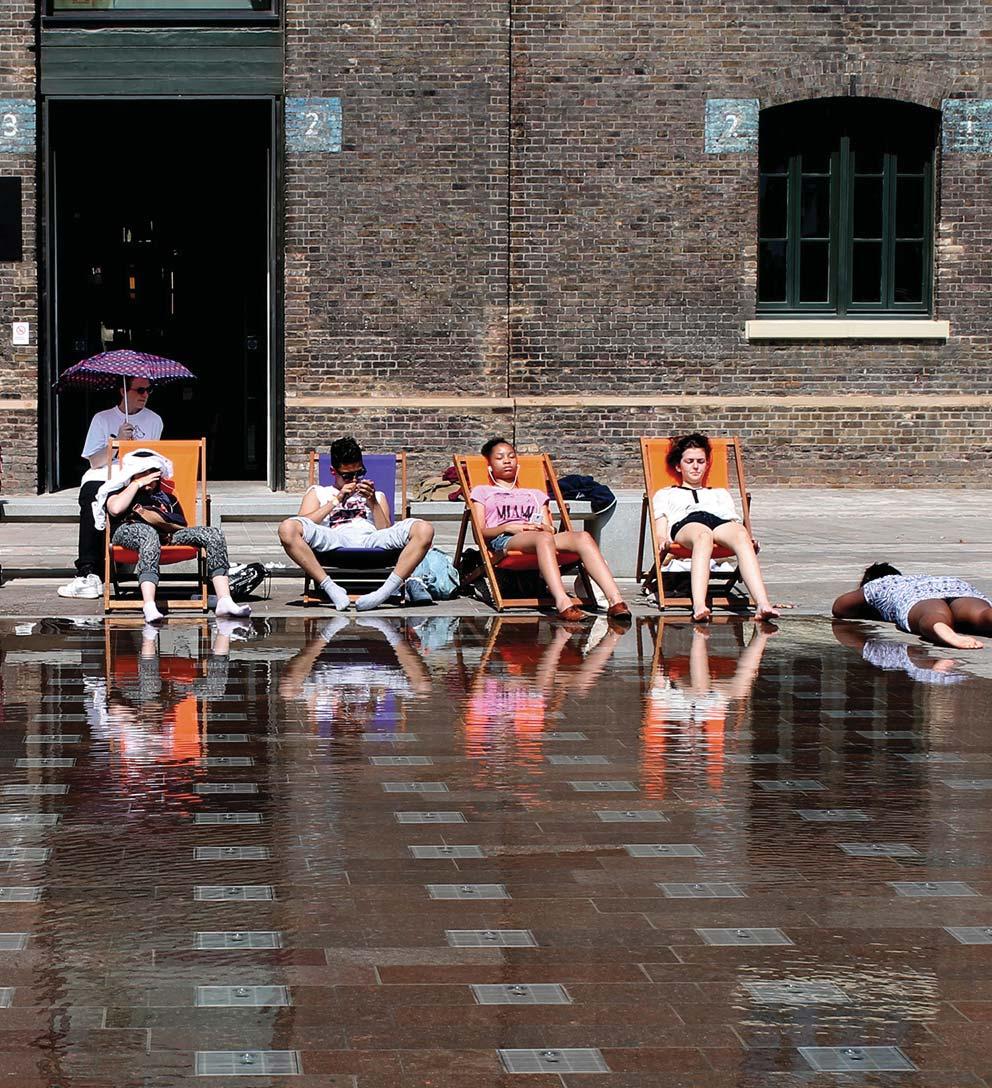


 United Kingdom Theory
United Kingdom Theory
& Methods
Neighbourhood
/ District Urban Design & Governance

The study of the senses in the urban realm has been strongly related to the study of the mechanism linking human-environment interaction. However, while in other disciplines as environmental psychology, geography, architecture or even history several authors have been studying and discussing these questions, there is still the need of a better recognition and critical understanding of these issues in spatial planning and urban design.
Even considering that the sensory question has been debated in urban studies since the 1960’s, it has nevertheless been predominantly addressed through a unisensory and visual perspective. Therefore, this research intends to go beyond the hegemony of vision and to contribute to a qualitative analysis of urban space through a more comprehensive multisensory approach.
On the one hand it looks into the urban realm and considers how different elements have been affecting the individual and the collective use of public space through the sensory regimes they can imply.
On the other hand, considering the senses as mediators of human understanding and experiencing of space, it highlights the non-visual ‘sensescapes’ of the city with the intent of recognising how these affect the qualities of space.
A mixed methodology applied to a variety of spaces within the streets and squares of Bishopsgate (London) aims to provide urban planners with better tools for a design or redesign of urban space.
The main proposition is that a multisensory approach to spatial planning and urban design is capable of offering a broader understanding of space, describing its character and atmosphere; but also to contribute to a more sensuously fitting new way of designing space while strengthening the identity of a place.
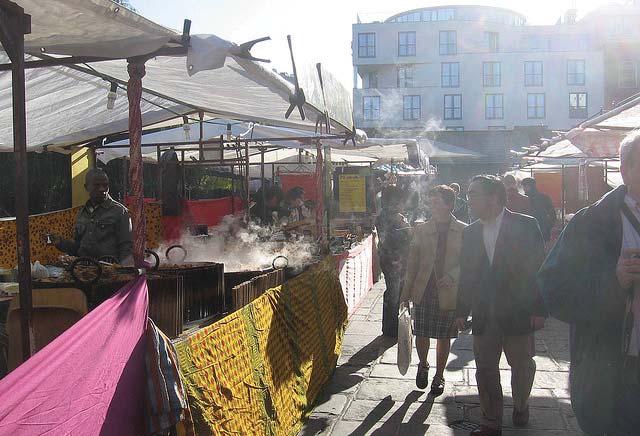


2
Photos: Alexandra Gomes
2. Strategic Intensification of Polycentric Cities - Examining the Catalytic Regeneration Potential of Urban Rail Projects
Brian Garcia
Brian is completing his PhD in Planning Studies in transport led urban regeneration and is now teaching assistant for Professor Sir Peter Hall’s postgraduate course Critical Debates in Urban Regeneration. Previously, Brian worked in architecture and city planning on diverse projects in China, India, Singapore and the United States. He has degrees in art practice and architecture from UC Berkeley, postgraduate degrees in Public Art Studies and Architecture from the University of Southern California and an MSc in International Planning from the Bartlett.
keywords: transport, urban design, regeneration, sustainability
email: brian.garcia.09@ucl.ac.uk

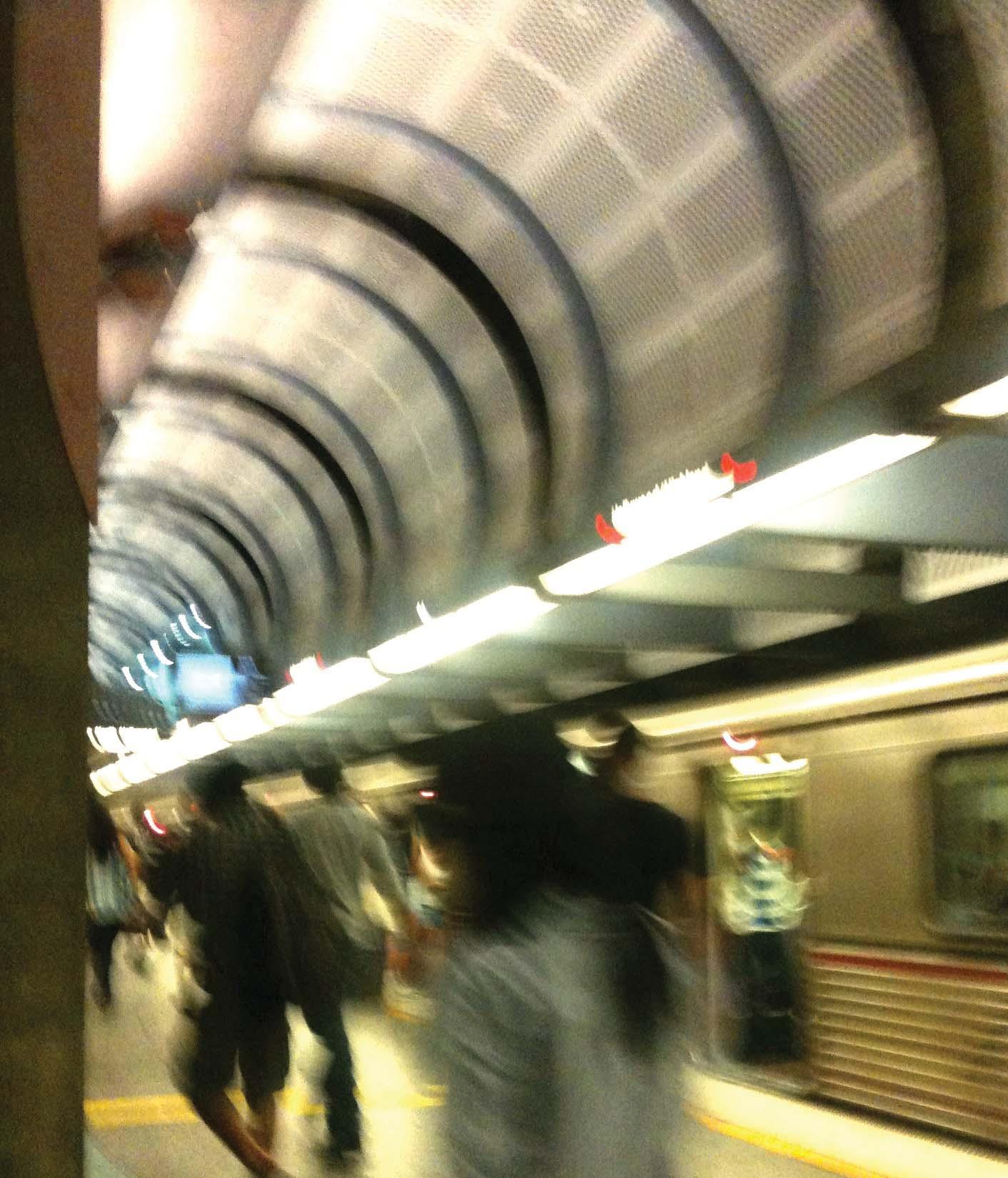


 World Geographical & Urban Processes
Neighbourhood / District Regeneration
World Geographical & Urban Processes
Neighbourhood / District Regeneration

There is a worldwide resurgence of public transport provision by cities as they attempt to address population growth, social inequality, environmental resource challenges and to instigate economic activity. According to continuing reports in the popular press and in the academic literature, spatial segregation remains a major indicator of poverty and an impediment to upward mobility. Public transport interventions straddle a powerful tension between gentrification costs that push locals out and the benefits of increased access for lower income populations. This case study analysis examines the efforts of Los Angeles, and other cities, to implement new public transport systems for increased mobility, environmental benefit, economic impact and social cohesion.
However, benefits beyond travel are often related to public transport tenuously. Furthermore, the fare returns or real estate uplift from economic investment are difficult to rely upon. Previous research has stated that benefits, specifically environmental benefits, are related to moving people from driving private cars to passenger train use. I suppose economic and social benefits are similar, and that more people walking on the street to the station indicates more benefits. Therefore, the key to public transport benefits is walkable station catchment areas. This research looks at the relationship between the urban design of pedestrian-friendly transport neighbourhoods and complex urban regeneration. It presents an exploratory analysis of station activity and public transport ridership, using ethnography and site analysis for a comparative transport urbanism.
Specifically, catchment areas of transport nodes are analysed with an urban design survey based on the classic methods that William H. Whyte used to study congregation in Manhattan’s plazas. Currently my research is at a critical point and I am collecting and analysing qualitative and quantitative data from Los Angeles, London, Berlin, Medellin and Hong Kong. This case study analysis is a triangulation of methods, including interviews, ridership data analysis, mapping and other ethnographic and observational methods, to develop a holistic understanding of the spatial effects of public transport and what might be the best context for new stations. So far, the academic literature has been confirmed in Los Angeles, with employment and intersections being the major drivers of ridership. However, it was also found that stations with a pedestrian-friendly urban design and land uses had a significant relationship to higher ridership. This preliminary conclusion is problematic to unhinge from other variables, but provides a step in linking a pedestrian environment to ridership and understanding the benefits of public transport more fully.
By presenting best practices and analysing station impacts and their relationships to land use, this work will provide useful knowledge for the planning and implementation of new public transport. There is no ‘one size fits all’ or ‘cure all’ for civic ills or growth challenges, but with a comparative case study analysis we can connect place or type with success or failure. It is vital that new public transport lines be accompanied by a contextual transitoriented development and an adaptive approach to the areas surrounding new stations, or that new stations be planned and placed within walkable and well-connected neighbourhoods to maximize benefits.
4
Photo: Brian Garcia
3. Beyond State and Market: Civil Society and the Coproduction of Project Governance
Dan Durrant
Dan is a planner studying at the OMEGA Centre for Mega projects in Transport and Development and he is interested in the way in which civil society responds to and shapes public policy in relation to the UK governments proposals for high speed rail. In the past he has worked for the East of England Development Agency where he managed a regional Design Review Service. Dan Has an MA in Social Enterprise from Anglia Ruskin University, an MSc in Spatial Planning from UCL and his PhD is supervised by Professor Harry T. Dimitriou and Professor Mike Raco.
keywords: Mega transport projects, Civil Society, Governance, High speed rail.
email: daniel.durrant.09@ucl.ac.uk


Urban & Regional Development
of Planning and Policy
Kingdom
Region
Mechanisms
United

Mega transport projects like HS2 are ‘agents of change’ with ‘multiple spatial, economic, environmental and other implications’ (Omega, 2013). They are distinctive features of modernity (Flyvbjerg et al, 2003), and since the invention of the railway grand projects have been conceived to promote commerce and stitch nations together. We can see these projects framed in such a way as to make them synonymous with progress and a vision of the future; HS2 for example is promoted as an ‘essential’ piece of ‘21st century infrastructure’ on which we are told ambitions for a 21st century economy depend (HS2Ltd/DfT, 2011). These projects are often controversial: high-speed rail schemes have seen huge protests in Germany with Stuttgart 21, and Italy with nearly 20 years of protest against the Treno Alta Velocità (TAV). My research uses the case of HS2 to examine the extent to which the controversy that surrounds such projects reflects the scepticism of people living in late modern societies with technological progress itself (Beck, 1992). It asks whether new forms of governance are required in a context where, as the consequences of disruptive megaprojects become apparent, people are less willing to accept the social and environmental costs and are sceptical about the economic benefits.
Privatisation may have seen the state retreat from many areas of transport provision. However, with mega transport projects the state is still an important actor, and they can still be described as ‘fundamentally an expression of public authority’ (Altschuller and Luberoff, 2003). The state is inevitably involved in underwriting risk, securing finance, granting consent and establishing a regulatory framework. However, in the post-war period the role of the state has undergone significant changes, and since the 1980s the rise of the ‘Washington Consensus’ has seen the state conceived more in terms of facilitating the market. One consequence of this changing role has been a loss of legitimacy (Habermas, 1992) with states less able to command the level of public support necessary to make controversial decisions. Since 2008 market institutions have faced a similar loss of legitimacy (Crouch, 2011). One possible beneficiary of the loss of legitimacy facing both state and market is civil society. Its advocates see it as offering an alternative to the neoliberal consensus that markets offer the only solutions for the issues facing the
developing and developed world (Salamon et al 1999). Claims are made that it offers greater legitimacy through its inclusive nature and connection to the grassroots. This is something with which governments have been keen to associate themselves in order to enhance their own political legitimacy (Taylor and Warburton, 2012).
If the consequences of this are a greater role for civil society in the process of making and delivering public policy then the concept requires greater scrutiny. Civil society can be hard to define as it includes local associations and global NGOs. It can be both conservative and progressive at the same time, making it hard for the political left or right to claim it as their own. One way of seeing civil society is as a ‘space of un-coerced human association’ (Walzer, 1990), from which we can address questions of how life should be lived and what institutions we ought to work towards. If this is the case then what answers and what institutions does it suggest in the case of a controversial mega transport project like HS2?
In a project that is framed, in part, in terms of narrow technocratic criteria for success, such as rail capacity and the value of travel time savings, civil society groups have proved effective in unpicking the assumptions upon which these arguments rest. Another way of viewing the way in which civil society undermines such technocratic and economic justifications for these projects is that it is actively constructing a new consensus about what costs are acceptable for a project of this type. In a similar way in the 1960s and 1970s a combination of the rise of environmentalism and local campaigns established a new consensus on urban motorways, and the extent to which the urban environment should be sacrificed to facilitate free movement of the car. Civil society might not offer alternatives but it does construct ‘certain dykes and channels so that actions are confined within proscribed limits’ (Dewey, 1927). Limiting the actions of technocratic decision makers is an important role played by civil society, but this casts it as purely reactive. My research is interested in going beyond this to explore whether or not it can generate the institutions necessary for a more democratic form of decision-making; one that is more suitable to complex, pluralistic, late modern societies, and more likely to deliver transport projects that meet their needs.
6
Photo: Priestmangoode
4. Between Co-operation and Commons: the Case of Collective Housing in UK
Daniel Fitzpatrick
Daniel is a researcher at the Bartlett School of Planning carrying out PhD under supervision of Nikos Karadimitriou and Yvonne Rydin. Before starting a PhD he worked in London, Rome, Nepal, India, Cuba on urban development issues.
keywords: housing, governance, institutions, co-operation, autonomism.
email: d.fitzpatrick@ucl.ac.uk

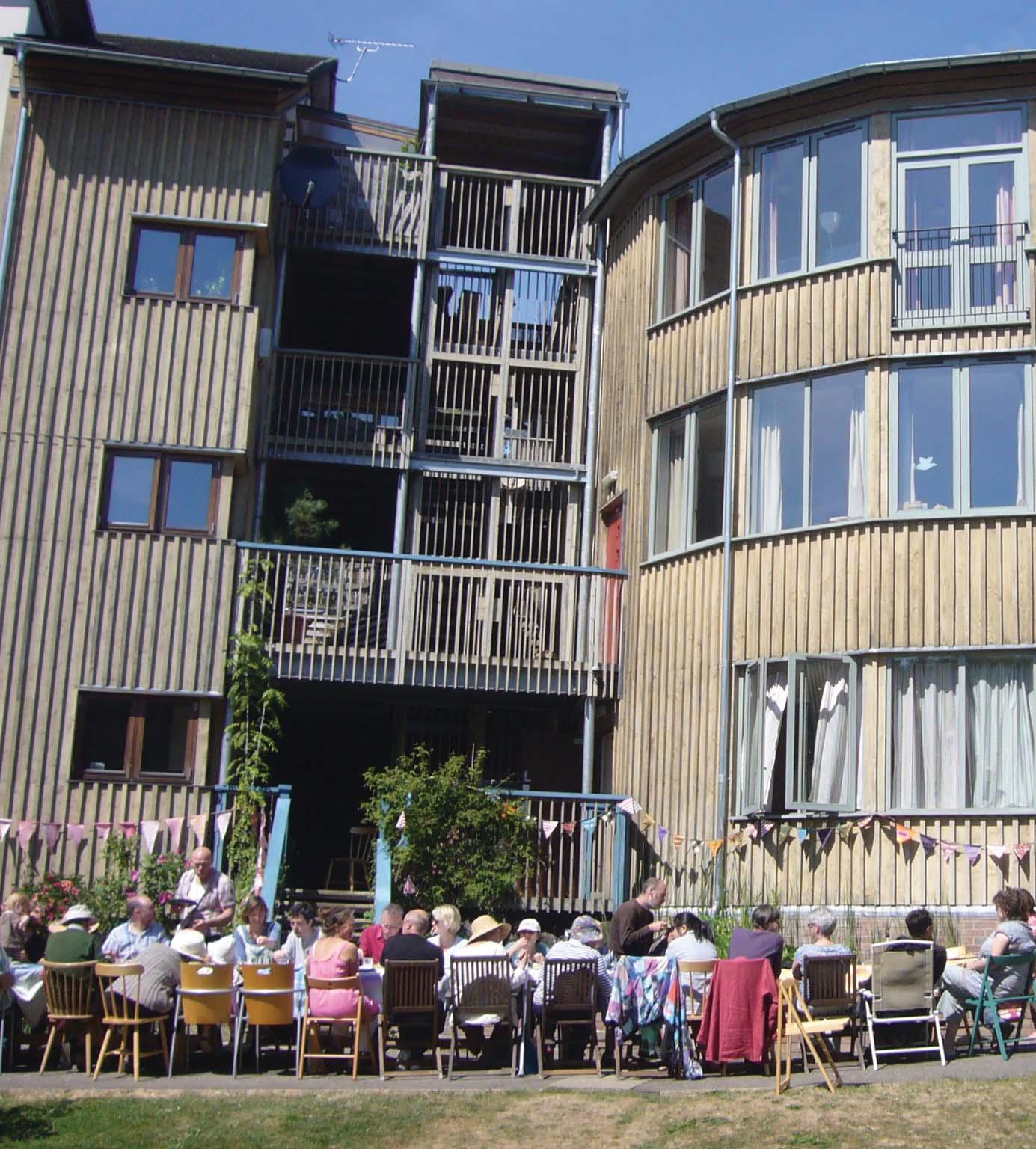


 Geographical & Urban Processes
Regeneration
United Kingdom
Neighbourhood / District
Geographical & Urban Processes
Regeneration
United Kingdom
Neighbourhood / District

One of the features of the current crisis and the government’s response of austerity is the crucial role played by housing – its financialisation has highlighted some important contradictions around how housing is produced and how alternatives for the future are conceived. Can the experiences of the mutual housing sector indicate some ways in which we can deal with these contradictions or tensions?
The mutual housing sector in the UK is relatively small compared to other countries in Europe, but the contemporary forms of delivering mutual housing in the UK are a legacy of the co-operative movement (Large, 2010). Although they are all embedded in a neo-liberal capitalist system, they can be seen as creating spaces that prefigure or articulate alternative institutions (Gibson-Graham, 2006) for the delivery of housing. These are not purely private and individual, nor state or public, but can be seen as adding to a commons of housing (Hodkinson, 2010).
To understand the emerging institutions of governance of these new housing commons the ideas around cooperation can be useful (de Peuter and Dyer-Witheford, 2010). The institutions for managing of these commons and the governance arrangements of collective control (Ostrom, 1990) draw on the co-operative principles of shared ownership, collective decision making and sharing of the land value captured.
The institutional models for housing commons range from squatting, co-operative housing, self-build or custom build, the co-housing movement, and Community Land Trusts, through to Development Trusts. Each model has a series of local, national or regional support organizations. The question is how these structures offer support systems for enabling or changing policy that supports
mutual housing and the creation of a new commons of housing.
The first part of the research will attempt to trace and understand the institutional ecology of mutual housing through the use of the contemporary examples outlined. The governance of collective mutual housing will be analysed and various factors examined, including openness or closed-ness to the wider community; intergroup and intragroup relations; and the roles of the State and markets. Looking at these factors will offer some hypotheses on the relationship between ownership, governmentality and self-management of a housing commons.
The second part of the work will look vertically, at the role of support organizations or ‘umbrellas’ which support local groups. They act as conduits for advocacy, and policy-shaping, and highlight the importance of developing the commons at multiple levels of governance (Armitage, 2008) through the sharing of resources such as knowledge and finance.
Mapping collective housing in the UK in this way can provide a clearer understanding of the way ownership, governmentality and self-management of a housing commons are shaped by both vertical and horizontal institutions. Also, this will allow for a discussion of the overlapping concepts of co-operation and commons: How does co-operation affect the governing of a housing commons, or how does this housing commons enable or depend upon co-operation? This can also help us to understand the potential and problems of expansion, scaling up, replication or innovation; which can help address the question of how mutual housing can offer alternatives for the future of housing.
8
Photo: Springhill Co-housing, Stroud, UK 2013
5. What is inner east London?
 Ed Jones
Ed Jones
Edward is a planner with more than six years experience working for London local authorities. He trained as a planner and urban designer, and is currently an ESRC funded doctoral student researching the governance and operation of London’s Tech City, under the supervision of Professor Mike Raco and Dr Claire Colomb.
keywords: London, Tech City, urban agriculture, real estate.
email: e.jones.12@ucl.ac.uk
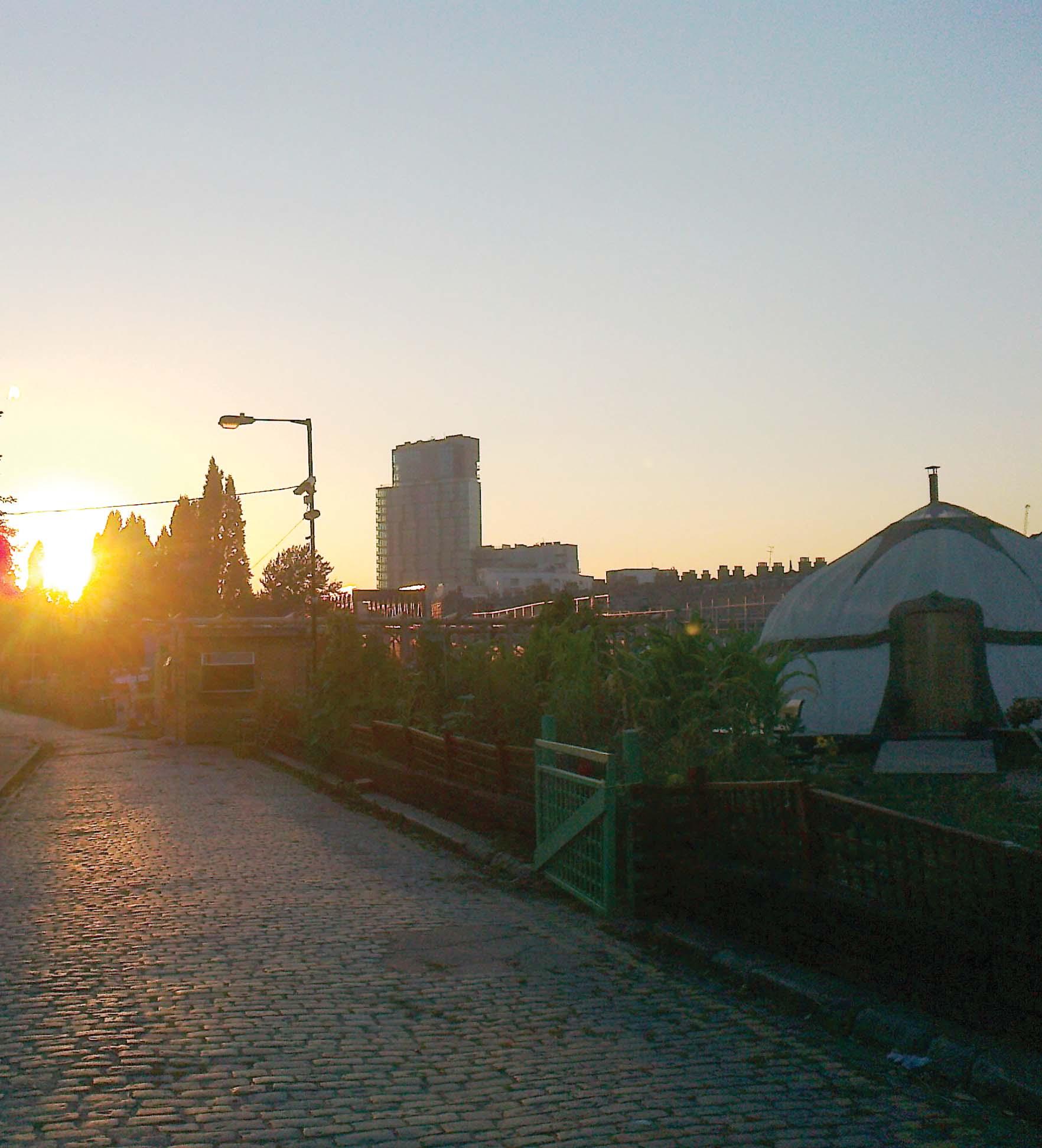


Urban & Regional Development Geographical & Urban Processes United Kingdom Neighbourhood / District

Back in 1964, UCL’s Centre for Urban Studies published an edited volume called ‘London: Aspects of Change’. Ruth Glass’ introduction to the volume narrated a walk she took from Kensington to Kings Cross early one morning in June 1963. This essay drew on the sights and sounds encountered on the walk to reflect on the changing fortunes of London, and the way in which newfound prosperity was changing the social, economic and spatial characteristics of London. She observed that:
‘… any district in … London, however dingy or unfashionable before, is likely to become expensive; and London may soon be a city which illustrates the principle of the survival of the fittest – the financially fittest, who can still afford to work and live there.’
50 years later, and utilising Ruth Glass’ literary device, my essay will explore issues around defining what exactly inner east London is. My doctoral research into Tech City takes as its geographical focus ‘inner east London’ – more a planners’ description than a proper place in its own right. Drawing on Glass’ introduction, this essay narrates a walk from Spitalfields City Farm to the Blackstone Estate in Hackney. Descriptions of the changing places encountered along the way provide an insight into the phenomena which are shaping inner east London in the aftermath of the global financial crisis.
Existing academic work on Tech City, the cluster of ‘creative digital’ firms apparently prospering in the shadow of the City of London, have defined inner east London in terms of the constituent wards that make up
the area in which Tech City firms operate. This essay builds on this approach by describing my encounters with the places of inner east London at a street level, bringing in a qualitative dimension as a means to better understand a territory which crosses borough boundaries and encompasses a range of places and communities. As London’s centre of gravity appears to be moving eastwards, rising land values and corresponding development pressures are transforming the fortunes of previously overlooked neighbourhoods.
The circulation of capital brings in new people and uses and causes the departure of others. Use value trumps exchange value at the City Farm, fostering new friendships and intercultural understandings. Shoreditch is being remade in line with its newfound status as a ‘prime central London residential property’ location, and the manufacture of intangible digital commodities is replacing the manufacture of physical goods. Brick Lane becomes less of an enclave and more of a ‘destination’. In places like Arnold Circus, Columbia Road and Broadway Market the urban fabric is restored and retained, but rising real estate values mean that these buildings now serve the needs of newer kinds of residents and visitors. And in the Blackstone Estate changes to council service provision and cuts to welfare spending are beginning to take effect.
This essay uses real estate consultancy reports and ward level data to complement encounters with people and places to provide an account of a rapidly changing area of London.
10
Photo: Ed Jones
6. Shaping Imaginary Geographies into Inclusive Cities. Approaching Design for the Homeless
Elisabeta Ilie
Elisabeta is a landscape architect and an urban design researcher. With a double Master degree in Landscape Architecture (University of Greenwich, UK) and Socio-spatial Analysis (Wageningen University, the Netherlands), her interests include negotiations of space and engaging urban design practices. Her PhD, supervised by Dr. Filipa Wunderlich and Prof. Matthew Carmona, is rooted in the inclusive urban design debate, focusing on the homeless.
keywords: inclusive urban design, the homeless, imaginary geographies.
email: elisabeta.ilie.12@ucl.ac.uk


United Kingdom Theory & Methods
&
Neighbourhood / District Urban Design
Governance

Within the inclusive urban design debate, mainstream research steps away from traditional urban design ideals of place-making and deals predominantly with the physical accessibility and free use of the built environment. With a focus on identity of place, certain urban design projects and solutions are preferred over others. As a result, certain group users are often privileged over others. The latter is frequently the case of marginal social groups whose needs are at times only limitedly addressed.
This research challenges commonly accepted notions of urban inclusivity by design and the actual extent of this inclusion in the case of such marginalised groups. The study builds on sociological theories of socio-cultural production of space/place, and of the body in space, in order to explore an alternative to traditional inclusive urban design approaches. The proposed conceptual framework assumes the in-place knowledge of individuals to be invaluable to an inclusive urban design process. The intent is to introduce ‘imaginary geographies’- personal embedded constructions of the urban reality and one’s place in it, as a potential disciplinary working concept.
By drawing on lived-in experiences of individuals in the urban setting, the project aims to learn from marginalised groups for more effective inclusive urban design practices. In order to do this, by means of ‘imaginary geographies’, the research explores tools and methods with the potential of being translated into a language specific to the urban design discipline. The conceptual framework proposed here argues, primarily, for an alternative approach to reading space from a designer’s expert position, where methods such as walking and videotaping intend to
capture the performativity of a city in motion. The second major argument is that in the absence of in-place experiences of public space users, design professionals can only attain a limited grasp of space-place dynamics. In this context, what is proposed here is a more versatile understanding of space which assumes proactive engagement with a diversity of social groups who cocreate and share lived public space. The underlying aim is to account for complex negotiations of space and for the plurality which, arguably, characterises urban environments. For this to be possible, public engagement needs to step beyond traditional participation towards more group empowering approaches. Photovoice, talks in place and mapped lived-in experiences are only a few of the methods employed for this purpose.
To probe the conceptual framework of ‘imaginary geographies’, the research uses the case of the homeless as an example of an urban marginalised group. Currently, homeless individuals are dealt with as a passive homogenous public space user. In consequence, solutions are rarely tailored to meet the needs of this particular group. Homeless-City relations have been as yet insufficiently explored within the urban design discipline. It is argued here that given the particular status of the urban homeless, placing them in context holds real value for the inclusive urban design debate.
By exploring the imaginary geographies of the homeless, this research aims to identify relevant toolsets with the potential of leading to more comprehensive urban design practices and, overall, an increased quality of the urban living environment.
Photo: http://benpurcell.com/51425/429526/gallery/the-weingart-project-chalk 12
7. Urban Form in Taiwan. Taipei City: A Case Study
Feng-shu Chang
Feng-Shu is a second year PhD student supervised by Dr. Stephen Marshall and Dr. Robin Hickman. Her research interests are in urban form and travel behaviour. Before studying in the UK, she graduated from National Cheng Kung University in Taiwan with both a Bachelors and a Masters degree in Urban Planning.
keywords: urban form, building types, housing patterns, coordinate matrix.
email: f.chang.12@ucl.ac.uk



 World Geographical & Urban Processes
Neighbourhood / District Urban Design & Governance
World Geographical & Urban Processes
Neighbourhood / District Urban Design & Governance

Urban form has been of interest to various disciplines, like architecture and urban planning, because it is evidence of human history and shows the ups and downs of socio-economic activity (Whitehand, 2003; Duan, & Qiu, 2009). Therefore, this research claims that both deconstructing urban form into both basic elements and a different hierarchy of combinations, and also comprehending all the subtle characteristics of urban form, could help planners to understand the needs or problems of every different city, since every city has its own needs and DNA (Busch, 2012). Those elements and combinations used in this essay could be regarded as the DNA code or genome of cities. Cracking DNA cord allows scientists to diagnose human disease and find the cure. By the same token, urban DNA (the elements of urban form) or urban genome (the identifiable combinations of urban form) creates the diverse appearances and characteristics of cities, so that planners could further comprehend various urban issues by manipulating those urban form data with other data. For example, analysing the correlation between urban form and mode share could show which urban forms might encourage people to walk or use public transport.
Following this, the research purpose is to discover the urban code in Taiwan, so that the outcome could help planners or policymakers to make suitable resolutions to conquer the problems in Taiwan, instead of directly adopting strategies from the west. Therefore, this essay observes and records characteristics of every element of urban form, by fieldwork in Taipei Da-An District. Afterwards, two-dimensional coordinate matrix and K-means clustering tools are utilised to categorise and reconstruct urban form into different types and combinations. According to the literature review from Alexander, Ishikawa, and Silverstein (1977); Katz, Scully, and Bressi (1994); Steadman et al. (2000); and Whitehand, Gu, Whitehand, and Zhang (2011), Land and Building Use Items of Zoning Regulation in Taiwan, and Real Estate Database and Land Use Investigation in Taiwan, etc., the rules of classifying the levels of combination of urban form and observation subjects of fieldwork are elaborated below:
• 1st Stage: Building Type = Building Function x Building Appearance
• 2nd Stage: Housing Type = Building Type x Open Space Type
• 3rd Stage: Housing Development Unit = Housing Type x Interface Type x Land Use
• 4th Stage: Housing Pattern = Housing Development Unit x Street Type
Finally, after the fieldwork and the classification, there are various housing patterns combined with 8 housing development units and 5 street types (Major-1, Major-2, Secondary, Service-1, Sevice-2). These housing development units are:
• Type A: Row flats (without lift or underground park) which have small front yards with walls and rain shelters.
• Type B: Row flats (without lift or underground park) which have large front yards with walls and rain shelters.
• Type C: Row flats (without lift or underground park) which have rain shelters but no yard.
• Type D: Row flats (without lift or underground park) which have arcades but no yard.
• Type E: Row condominiums (with lifts and underground park) which have large front yards with walls.
• Type F: Collective condominiums (with lifts and underground park) which have yards or courts with walls.
• Type G: Collective condominiums (with lifts and underground park) which have yards or courts with setbacks.
• Type H: Collective traditional houses or militarydependents villages (without lift or underground park) which have yards or courts with walls.
Besides this, almost all of these housing development units are mainly connected with lanes or alleys, except Type D. That is because Type D is of row flats usually used as street shops with arcades. In their entirety, these different spatial combinations of housing patterns make up the whole urban form in Taipei.
14
Photo: National geographic. www.huaxia-ng.com
8. Planning Models and Policy Mobilities: Urban Planning in Rio de Janeiro in the Age of Mega-events
Gabriel Silvestre
Gabriel is a PhD candidate at the Bartlett School of Planning working under the supervision of Professor Mike Raco and Dr. Ben Clifford, and a visiting lecturer at the Faculty of Architecture and the Built Environment, University of Westminster. His doctoral research is funded by the Capes foundation of the Brazilian Ministry of Education.
keywords: urban politics, policy mobility, planning process.
email: gabriel.silvestre.11@ucl.ac.uk

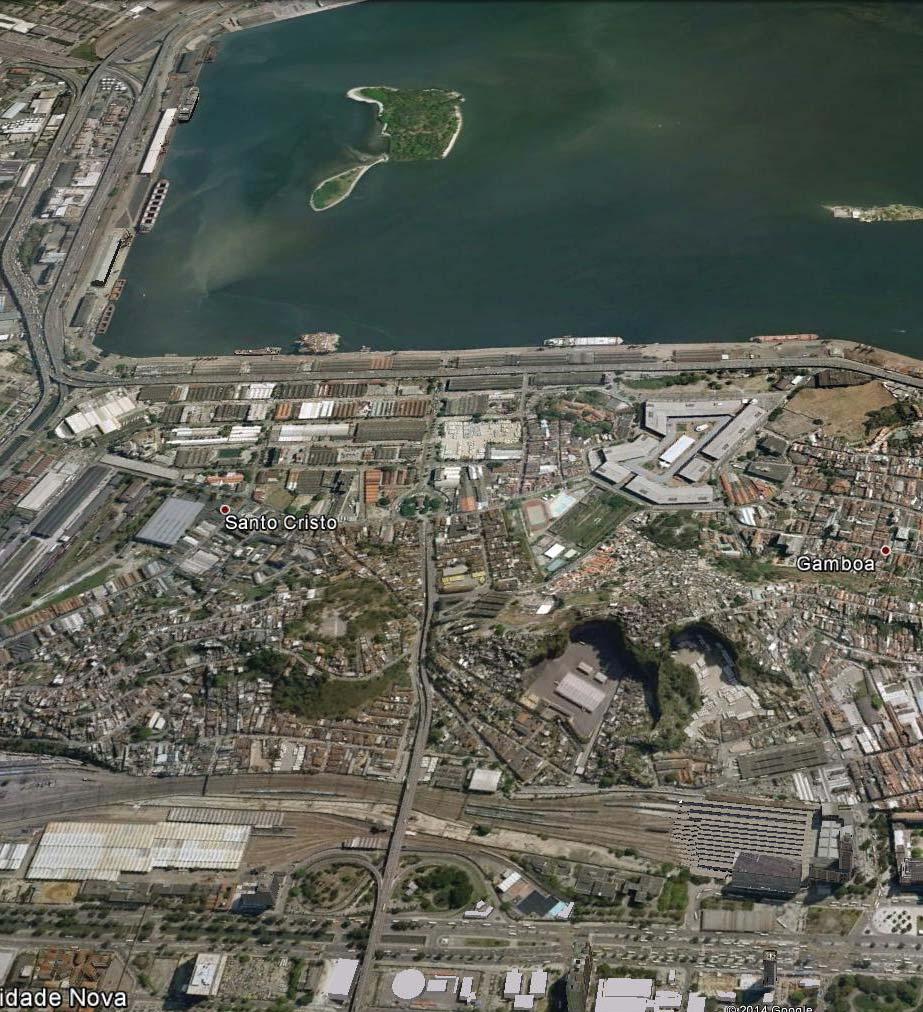


World Geographical & Urban Processes City Urban Design & Governance

The knowledge and ideas behind the design of grand plans for the development of our cities has long generated interest in the study of planning history, and examples abound of the influence of individuals and their proposals across geographical boundaries, such as Ebenezer Howard’s Garden City or the Haussmann renovation of Paris. There is however, a renewed interest which spans disciplines to critically engage with the way context-specific policies and expertise are mobilised, translated and adapted into new plans. This is particularly relevant at times in which cities are frequently measured against each other and encouraged to learn from ‘successful’ policies; as one can witness in the proliferation of international urban performance tables, think-tanks’ reports, and in the activities of international consultancy groups and multilateral institutions advocating the take-up of best practices.
In the planning literature there has been a call for ‘thicker’ descriptions of transfer processes (Friedmann, 2010); one that takes into account the ‘complex interplay of exogenous and endogenous forces’ that enable ideas and practices to flow from one context to another (Healey, 2010). A similar and more urgent approach has been taken by geographers to interrogate how contemporary urbanisation, although grounded at the local scale, is shaped by global circuits of knowledge through which circulate particular sets of urban policies, models and practices (McCann, 2011). It is suggested that policies more likely to travel are those that ‘extend dominant paradigms and which consolidate powerful interests’ (Peck and Theodore, 2010), which raises the need to account for the social construction of networks and the
power relations present in policy interactions. Finally, political scientists have also been interested in the ‘transnationalisation’ of policies and the role of nonstate actors as policy entrepreneurs (Stone, 2004). The common concerns of these literatures are the recognition of the extended processes of policymaking that can stretch well beyond the local, and which is porous to the activities and interests of a range of policy actors.
This research examines the nature of urban planning proposals currently in place in the city of Rio de Janeiro on the occasion of the 2016 Olympic Games. The event has been heralded as a watershed in the history of urban development of the city; both fuelling the development of expanding urban regions and the regeneration of declining central areas. However, despite general claims identifying these processes as Olympic legacies, a closer examination reveals how policies such as strategic planning, the hosting of events, and waterfront regeneration are part and parcel of a sustained shift in the rationale of local urban planning in the last two decades. It is argued that these were influenced by and incorporated experiences from elsewhere, which allowed local actors to gain political capital and advance their agendas. In order to analyse the transfer of policy models and expertise, their adaptation and implications, this study draws data from municipal archives and semistructured interviews with policy actors. An appreciation of how policies are not just defined ‘in place’, as Cochrane and Ward (2012) recognise, can help us to understand in which ways urban development is relationally pursued, and how globally circulating ideas are embedded into concrete planning policies.
16
Photo: Google Earth
9. The Underlying Forces Behind the Increasing Trend of Consolidation Between Urban Development and Finance: The case of the Saint Denis Plain urban regeneration in Paris
Jae Kwang Lee
Jae Kwang is a doctoral researcher with the Bartlett School of Planning and is engaged in work relating to sustainable urban development and its impacts. His current focus is concerned with both understanding the synergistic relationships between transport, land use, and environmental elements in a urban development project and modelling the effects of their synergistic interactions.
keywords: financialization, urban regeneration, governance, real estate
email: j.lee.10@ucl.ac.uk

 Europe Geographical & Urban Processes Regeneration
Neighbourhood / District
Europe Geographical & Urban Processes Regeneration
Neighbourhood / District

Recent decades have seen a considerable development of financial institutions and their growing influence on urban development, especially on large-scale urban development. Financial investors are expanding their territory towards urban development, and the relationship between urban development and finance is increasingly consolidated. This recent phenomenon has opened a debate on how increasing financial influences on urban development impacts on the outcome of urban development, drawing keen attention from policy makers, academics, and the community. Few studies, however, have been conducted on the relationship, and surprisingly there is little evidence of how this growing financialization has developed in the context of urban development and what forces have driven the financialization of urban development. This paper focuses on the underlying forces behind this increasing trend of consolidation towards financialization of urban development. The Saint Denis Plain urban regeneration project in Paris was selected as a case study because of the interesting behaviours of the actors involved in the project. Based on in-depth analysis of the behaviour of actors involved in the project, this paper argues that the increasing trend of consolidation between urban development and finance is attributable to two factors:
1) urban regeneration policies that promote a relaxation of regulations on foreign direct investment and property development, and 2) the development of investment strategies that give institutional investors more flexibility towards investing in urban regeneration projects.
The growing influence of institutional investors on urban regeneration projects has arisen from urban regeneration policies which drive a relaxation of regulations on foreign direct investment and property development. In the era of globalization, urban competitiveness has become a more important policy agenda for cities, and city leaders have implemented several policies to improve urban competitiveness of their cities. These policies have focused on making cities better places for creative people and economic activities and reinventing declining cities’ economies. Of these policies, an urban regeneration policy has been picked up in preference to others. At the centre of urban regeneration policies, a relaxation of regulations on planning, property development, and foreign direct investment has been placed. The case
study of the Saint Denis Plain urban regeneration gives us an interesting overview of the French government’s regeneration policy. In the project, the French government put several incentive schemes in practice, such as tax reduction and infrastructure provision. In particular, an incentive scheme that the establishment of transport infrastructure for the regeneration site was guaranteed by the French government played a key role in attracting institutional investors to the project. This incentive scheme brought about a change of investors’ views on the regeneration project, from high-risk investment to low-risk investment, because the guaranteed transport infrastructure provision significantly reduced the risk associated with the initial stage of the project.
The evolution of financial institutions has also contributed to the increasing trend of consolidation between urban development and finance. Thanks to technology advance in Internet and telecommunications, financial institutions have been developed remarkably in recent decades. Along with new types of asset class in an investment portfolio, new investment strategies have been introduced to financial investors, increasing the investment range of their investment. The advance in investment strategies, in particular, has offered financial investors more room to manoeuvre for their investment, allowing them to diversify their investment portfolio and to maximize their profit even on investments in property development projects. For example, institutional investors used to be reluctant to invest in urban redevelopment projects because their investment nature, which seeks low-risk investment, conflicts with the high risk involved in regeneration projects. With new investment strategies, however, institutional investors gain an ability to manage that risk. The case study of the Saint Denis Plain urban regeneration project provides us with a more concrete picture as to how institutional investors manage to invest in urban regeneration projects. In the project, institutional investors took a new approach through which a high risk associated with the project was hedged. They used an opportunistic short-term play to hedge the risk and to take advantage of the economic conditions, rather than conventional ones. This approach allowed institutional investors to be flexible with their risk-return profile even during the project.
18
Photo: Jae Kwang Lee

10. Public Space as a Functional Possibility
Ji Hyun Kim
Jihyun is an urban designer and planner who practiced for more than 7 years. After his professional career he studied MArch Urban Design in UCL and MPhil Architecture in University of Cambridge. Currently he is conducting a PhD under the supervision of Dr. Tse-Hui Teh and Professor Jon Agar.
keywords: public space, human activity, Actor-Network theory, affordance.
email: ucftjh6@ucl.ac.uk


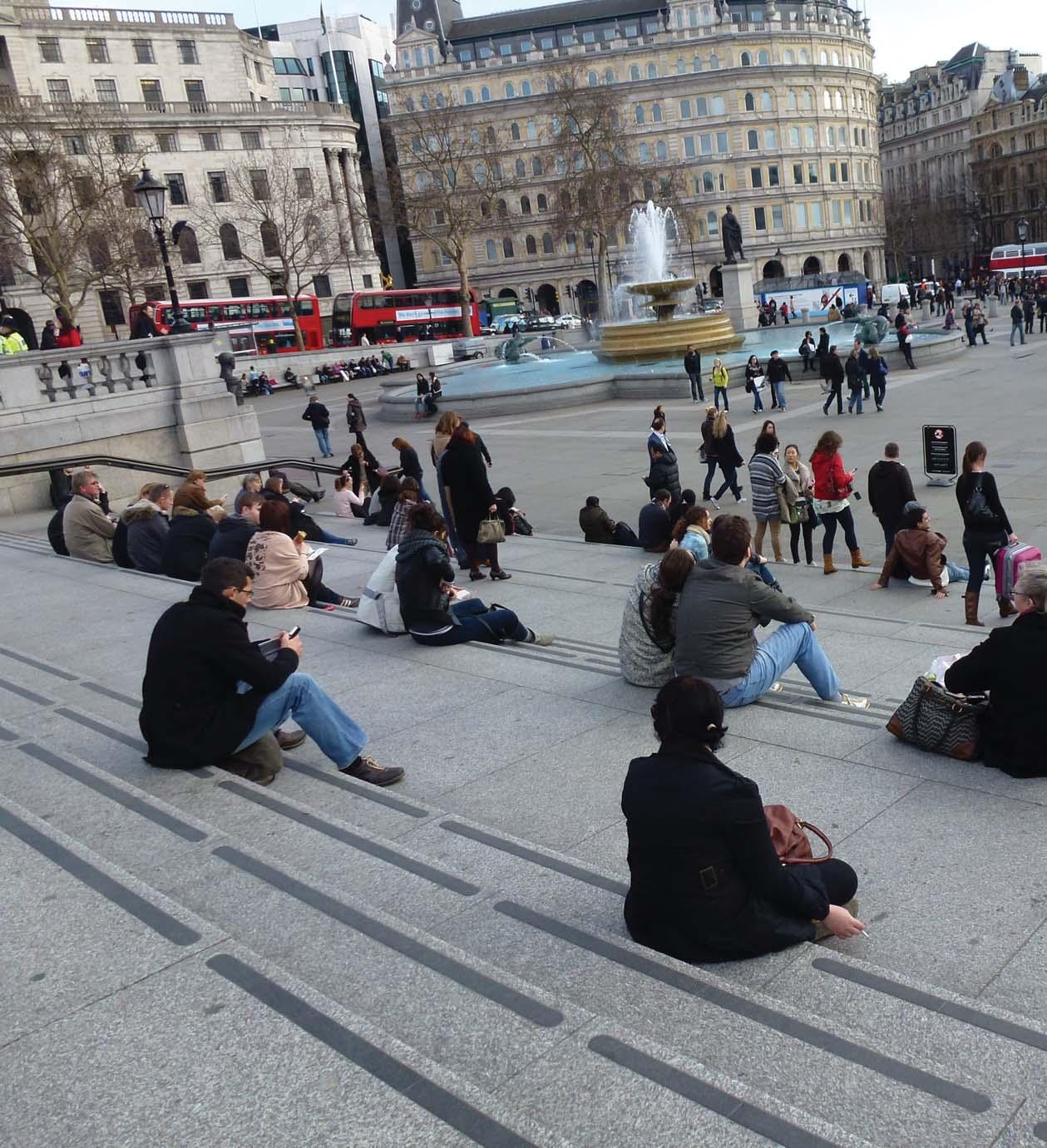
 Geographical & Urban Processes
United Kingdom
Neighbourhood / District Urban Design & Governance
Geographical & Urban Processes
United Kingdom
Neighbourhood / District Urban Design & Governance

This research is about diverse human activities in public spaces. Human activity, which is multiple and overlapping continually within the same physical setting, is one of the key qualities of urban public spaces which modern urban design, as many scholars noted (Alexander, 1966; Gehl & Koch, 2001; Lefebvre, 1991), has failed to produce in its results. There have been many descriptions of this quality, such as ‘liveable’ (Gehl & Koch, 2001), ‘well-responsive’ (Whyte, 1980), ‘a quality without a name’ (Alexander, 1979), ‘loose space’ (Franck & Stevens, 2006), but there has not been a clear explanation about the involving elements and their relations in multiple human activities, and this is the point this research enquires.
The main research question is how diverse human activities are generated and how human activities explain the characteristics of urban public space. In searching for the answers to these questions, the research applies two theoretical concepts. The first is ‘Actor-network theory (ANT)’ as a framework in the research to describe human activities as heterogeneous and continually changing networks. The second is an ecological concept of ‘Affordance’ to describe the arbitrary physical relations between humans and objects, which is a catalytic factor in the network of multiple and ever-changing human activity.
ANT sees all the things around us as stable sets of associations made equally by human and non-human influences. The sets of associations, the networks, can exist only when they are continuously reconfiguring themselves (Latour, 2005) to make relations with others; they call this performativity (Law, 2009). Thus, we can have ontology, of what the network is, by understanding the epistemology of the network, how it is agglomerated and what it performs. With this perspective, the research examines the factors involved and the way they relate to
each other in human activities. This creates the ontology and epistemology of human activity as heterogeneous intertwined networks that are continuously regenerated in different ways with different relations.
The concept of ‘affordance’ is applied to grasp the multiple and changing relationship between humans and the environment. Gibson (1979), who first coined the concept, argued that action and perception is linked, and environment affords certain forms of action possibilities to the animal. Thus, the set of affordances can be perceived differently from the same environment and the actual action also can be differently picked up from the set of affordances. For example, a ‘normal’ desk is too big for children to do the same job as adults do, but its size is more proper for them to play with, such as jumping or hiding. In terms of ecology, they detect different affordances from desks because of the relative size of the human and nonhuman. This can be seen on the stairs and ledges used for sitting places, or the fences used for leaning on objects in public spaces. Even though actual action also needs other social-cultural aspects to be realised, this research asks whether the physical relations between human and environment have a pivotal role in generating multiple human activities in public spaces.
As a case study, the research will look at the suburban town centre in Kingston-upon-Thames, London, which is mixed-use supported by surrounding residential areas. Suburban town centres are supposed to be the economic core in the local area, as well as the social and cultural focal point of the residents. Thus the suburban town centres have to serve multiple demands of the users. The physical differences and activities will be observed and analysed to compare the differences between the blocks in the study area.
20
Photo: Ji Hyun Kim
11. Understanding material participation in “event-ual” urbanism
Jorge Martín Sainz de los Terreros
Jorge is an architect, urban designer and researcher working in the interdisciplinary realm amongst urban studies, political science, social sciences and urban design. After practising for more than 8 years, he studied the MSc in City Design and Social Science at the LSE. Currently he undertakes his PhD under the supervision of Professor Yvonne Rydin and Dr. Tse-Hui Teh.
keywords: materiality, participation, collective action, Actor-Network theory, temporality.
email: jorge.martin.13@ucl.ac.uk

 Europe
Geographical & Urban Processes
Neighbourhood / District Urban Design & Governance
Europe
Geographical & Urban Processes
Neighbourhood / District Urban Design & Governance

In 2008, the real estate bubble burst in Spain immersing the country in a profound crisis, that uncovered two different dimensions of the system’s fragility. On one hand, the weakness of its democratic dimension has been evidenced by social unrest and a cycle of protests derived from the implementation of austerity measures and the withdrawal of public investment in the public realm. On the other hand, its unsustainable urban dimension has been illustrated by the inability of governments, institutions and urban practitioners at all levels to propose alternative urban models. These facts have had a huge impact in urban development processes which froze waiting for future opportunities.
However, the economic recession has also triggered innovative initiatives that have confronted both the political and urban dimensions of the crisis by proposing new urban models to design, manage and regulate urban spaces. These urban initiatives have fostered renewed debates on the role of citizen, bottom-up participation in urban transformation process. For long, these debates on participation have divided scholars that disagreed on the roles that different agents should play in decisionmaking processes. Issues on accountability, legitimacy and representation have been problematised, having positions that ranged from the support of full citizen empowerment to absolute state control (Arnstein, 1969). Yet discussions usually get locked in the who questions: Who participates? Who is entitled to? Who decides who and what is discussed? Who is invited? Who represents?
To unlock them, the research widens the scope of the questions by discussing a different dimension of participation through the lens of socio-technical studies. In doing so, the paper includes a broader understanding of the social which considers non-humans as active agents in the political debate, looking specially to materiality (Marres, 2012). This different focus permits questioning to what extent collective action should be limited to human action, introducing debates on spatial (Awan, Schneider,
& Till, 2011) and material (Coole & Frost, 2010) agency. Also, it allows understanding participation, rather than as a set of tools, as a performative process where people and materials are part of the same assemblage. By discussing ‘agentic’ capacities of materials, things and spaces (Bennett, 2010), the research aims is reconsider the issues of representation, legitimacy and accountability beyond human individuality through understanding collective networks as political bodies. By combining the political, spatial and material agency perspectives, the research uncovers the relations between governance, participation, space and materiality and the way in which they mutually shape each other.
In particular, the research studies the specific role of different levels of materiality (sites, artefacts, tools and materials) in the development of specific temporal interventions made by collective networks in public spaces. As a method of enquiry, the study proposes a thorough description of processes by ‘following the actors’(Latour, 1987) and their ‘controversies’ (Yaneva, 2011).
The research focusses on case studies of ‘event-ual’ urbanism projects. These ‘event-ual’ projects are to initiatives that utilise vacant, awaiting or ‘to-be-developed’ sites to implement temporary interventions ‘meanwhile’. The idea is that the addition and accumulation of a number of events in specific spaces allow to develop an added use value to sites and projects beyond productivity. This specific type of urban temporary interventions has been researched from different perspectives (Andres, 2013; Bishop & Williams, 2012; Tonkiss, 2013), but few have taken into account materials and spaces beyond understanding them as mere resources or sceneries.
Ultimately, by bridging materiality and participation, the paper contributes to explore different models of governance and design where active non-humans could be taken into account when developing urban spaces.
Photo: www.elcampodecebada.org 22

12. Placing the Digital Economy: the Spatiality of Work in ‘Tech City’, London
Juliana Martins
Juliana is an architect and urbanist. Currently, she is finishing her PhD and teaches urban design modules at the BSP (as PGTA). Previously, she studied at the Architectural Association School of Architecture and worked as architect, urban designer, and policy adviser, both in public and private sectors, in Lisbon and London.
keywords: space, work, creative cluster, digital industries.
email: j.martins@ucl.ac.uk


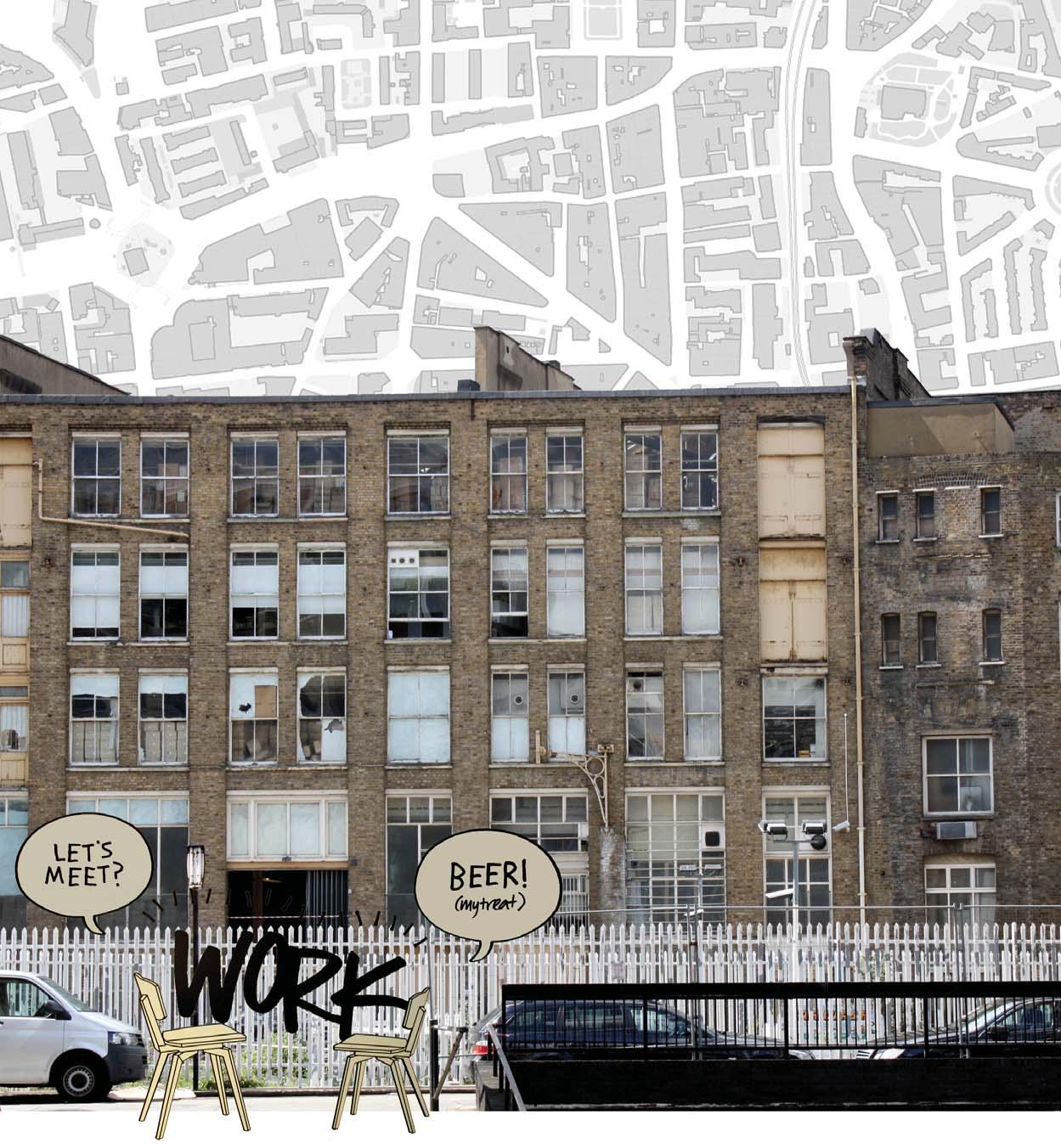

 Geographical & Urban Processes
Regeneration
United Kingdom
Neighbourhood / District
Geographical & Urban Processes
Regeneration
United Kingdom
Neighbourhood / District

In the past 20 years, a wealth of literature and policy initiatives have focused on ‘creative cities’ and ‘clusters’, the ‘creative class’, and ‘creative industries’. These debates are associated with two parallel developments: First, the reassessment of space in the (global) economy and the ‘rediscovery of the city’ that took place from the 1980s onwards in several fields of academic enquiry (Amin and Graham, 1997). This work challenged earlier predictions (Toffler, 1980) that questioned the importance of space in economic, social, and work relationships in face of technological and economic transformations. Second, changes in cultural and local economic policy, which became increasingly intertwined and brought culture “to the centre of policymaking as a potential economic resource” (O’Connor, 2010, 31). Policies initially focused on flagship cultural projects and city marketing and later developed into strategies aiming at fostering creative cities or clusters. Scholarship and policy on these issues, however, stem from distinct conceptual and empirical bases (Landry and Bianchini, 1995; Florida, 2002; 2005; Pratt, 2011) suggesting that ‘the nature of the relationship between the creative economy and the city, in real or aspirational governance terms, is far from settled’ (Pratt and Hutton, 2013, 92).
Critical contributions to understand this relationship come from ‘productionist’ approaches (Indergaard, 2013) which examine the cultural and creative industries as an industry (Scott, 1997; Pratt, 2011). Studies highlight their tendency to concentrate, particularly in inner-city areas, the role of proximity in supporting production processes and associated human interactions (Pratt, 2011; 2013), and that spatial characteristics of places matter for their operation, both in material and symbolic ways (Hutton, 2006; Lloyd, 2006). However, empirical evidence remains limited in what concerns the diversity of spatial patterns in different industries. More importantly, the concrete spatiality of these processes is under-researched and lacks theoretical formulations.
This research aims to expand current knowledge by examining the relationship between space and digital production in Shoreditch, East London (2009-2012). It seeks to identify the spatial conditions that, at multiple scales, mediate and support the operation of digital industries in inner-city locations. The study develops a new approach in this field of enquiry by investigating these relationships through the spatiality of (digital)
work. Drawing on studies from economic and human geography and sociology, work is conceptualized as a range of six activities (producing, meeting, networking, learning, displaying work, and socializing) performed across four spatial settings: the extended workplace, workspaces, industry events, and the neighbourhood. The creative digital industries are particularly relevant for the debate because they both use and develop technologies that supposedly challenge the importance of place in economic activities. The research design is a qualitative case study using three data collection methods: semi-structured interviews with digital workers and other industry actors, direct observation of selected spatial settings, and secondary data. The area is an emergent cluster of digital firms (Foord, 2013; Nathan, Vandore, and Whitehead, 2012) also known as ‘Silicon Roundabout’ and ‘Tech City’. Since 2008, it has received growing media and political attention, particularly with the set-up of the Tech City Investment Organisation by the UK Government in 2011, thus providing a less explored but very relevant case.
The original contribution of the research will be threefold. First, it provides an empirical and detailed account of the spatiality of digital work in ‘Tech City’ which has not been examined to date. This analysis reveals a network of spaces (base, ancillary, and events) used for work in complementary ways, suggesting a reconfiguration, and extension, of the ‘workplace’ in these industries. While unraveling the critical role of multiple settings in supporting digital work, it also shows that this spatial extension is limited and associated with the nature of work and the specific spatial requirements of the tasks involved. The office still plays a central role in digital production. Second, the study identifies macro and micro spatial conditions that mediate and support these work patterns and advances the conceptualization of functional, social, and symbolic aspects of these relationships, as well as the role of human agency in these spatial processes, expanding the understanding of why and how place matters in the digital economy. Third, the analysis reveals that ‘structured interaction’ and micro-processes of spatial segregation and exclusion are critical to support a range of work practices and social interactions in digital production. In contrast to influential accounts that associate creative cities and industries with diversity and tolerance (Florida, 2005), at the scale of these spatial practices, processes of selection and the quest for sameness seem to underpin the operation of these industries within urban space(s).
Image: Juliana Martins 24
13. Local Government’s Fiscal Arrangement and Urban Change - A Case Study of Tehran
Katayoun Karampour
Katayoun started PhD research at the Bartlett School of Planning in 2012, after graduating from MSc course on Urban Regeneration at the same school and MA in Architecture at University of Tehran. For more than 10 years she is interested in urban studies in general and in urban change in fast developing cities in specific.
keywords: development process, fiscal decentralisation, Tehran, local government funding tools, urban change.
email: katayoun.karampour.09@ucl.ac.uk


& Regional Development
Theory & Methods
Urban
World
City

Since the last quarter of the 20th century, many local governments around the world have been facing fiscal decentralisation for several reasons, such as improving the public sector’s efficiency, reducing the budgeting issues, and promoting economic growth (Oates, 1972; Musgrave & Musgrave 1984; Bahl & Linn, 1992 and Bird, 1993). By fiscal decentralisation budgetary authority has passed from a central government to local governments, devolving the power to make taxing and spending decisions (Bahl, 2008).
The local governments responsible are searching for ways to access private capital to finance their expenditures to meet the services demanded by residents (UN-Habitat, 2009). Charging for construction of new developments is one of these ways to generate income for local governments. Charges can be set through negotiation (e.g. planning gains in England), regulation (e.g. impact fees and development charges in the US and Canada) or even bidding (e.g. selling additional construction bonds in Brazil).
How these compensations (or taxes) can affect the planning objectives of a city and the development process is the main topic of this PhD research. By using empirical evidence from Tehran, this study investigates how a municipal funding tool, selling construction density, has influenced the urban planning system of Tehran through its effects on the development process and developers’ decisions. By analysing this phenomenon, this research investigates whether it is appropriate that municipalities use their power to set limits to private development as a source of revenue for public investment, and what the implications of doing that are.
Since the 1980s the Tehran municipality has sold extra building rights to developers, allowing them to build
higher constructions than the permitted height suggested in Tehran’s Comprehensive Plan. This tool brought financial independence for the municipality from the central government and encouraged more production of housing units. However, it resulted in the dependence of the municipal budget on the construction sector, housing market instability, emergence of temporary circulars and ad hoc regulations (e.g. Article 269 and Article 329). And more controversially, the selling density tool handed over development of the city to the vagaries of housing developers’ interests.
According to the literature, various studies have addressed municipal financing tools and their impacts on economic and market operation. However, few investigations focus on the implications of municipal financing tools for the development pattern of the city and the urban planning system and its objectives (Needham, 2000; Slake, 2002).
This study intends to fill in the gap between municipal financing studies and urban planning studies by investigating the impacts of funding tools on the pattern and speed of urban development. Although this study will be undertaken in the context of Tehran, its results aim to shed some light on the efficiency of municipal financial tools in other regions too.
The general orientation of this research is a qualitative strategy. A case study approach will be used for this study because the exploratory, descriptive and explanatory purposes of this research (Yin, 2003). Primary data will be collected through semi-structured interviews with 45 developers working in different parts of the city, to investigate how the policy affected their tendency to build in particular parts of the city, and 15 urban planners to elaborate on the effects of the tool on the planning system of the city.
26
Photo: Hoda Rostami

14. Multinational Corporations and Regional Development: Bargaining Power and its Spatial Outcomes in the Chilean Mining Global Production Network.
Martín Arias

Martin is a Regional Economist and researcher working in the study of the relationship between multinational corporations and local development. His work has been focused in the mining industry in Chile, especially in the existence of mining clusters or enclaves. He studied his Master in Regional Science in the Universidad Católica del Norte, Chile and now he is currently working under the supervision of Professor Nick Phelps and Jung Won Sonn.
keywords: mining industry, GPN, power, enclaves, cluster.
email: martin.loyola.11@ucl.ac.uk


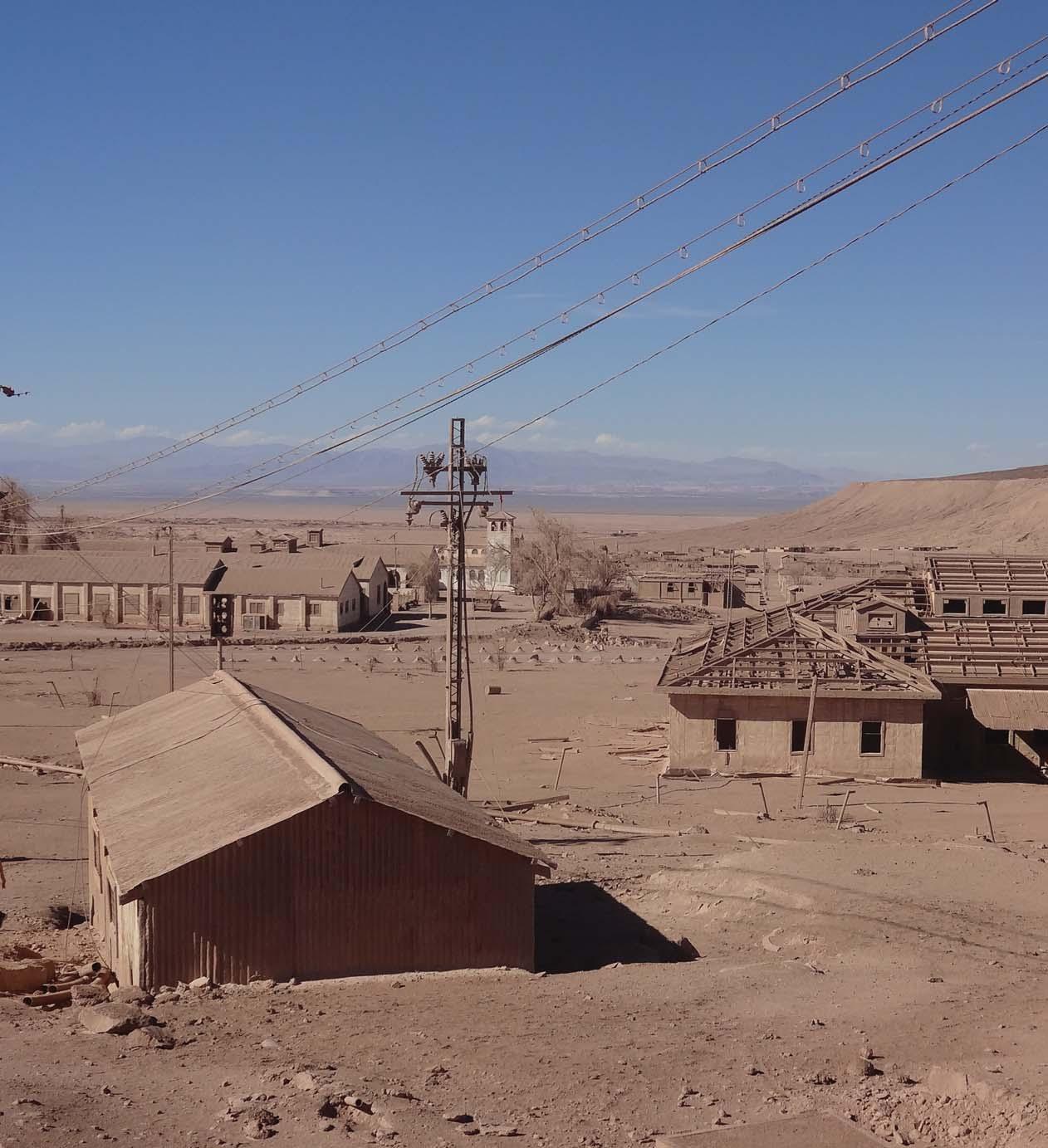


Urban & Regional Development
World
Geographical & Urban Processes
Region

Historically, mining regions have shown a high presence of multinational corporations (MNCs) which have organised their production through the creation of economic enclaves. This traditional form of enclave took the form of mining camps, that were located next to the ore, usually in the middle of an inhospitable place, and whose primary function was to provide housing for the labour force. Here the ‘company’ or MNCs, would have control over almost every aspect of the camp’s life, including public goods (housing, money, police force) and amenities. This form of agglomeration was notable for its lack of linkages with the rest of the host economy, its stark inequalities inside the mining camp, dependence on the mineral, labour abuse and rent exporting; all of which led to unsustainable growth and lack of development, causing the withdrawal from this kind of policy.
Nowadays, the changes caused by the current globalisation process have established that this new openness should lead to sustainable development, which, in the case of mining regions, should occur through the formation of cluster agglomerations. This form of agglomeration allows the conditions for economic diversification, sustainable growth and development for the host region.
However, the question remains: Is the enclave logic overcome? Or are we in the presence of a new form of enclave? The current literature does not address these questions, and even some of the current categories of clusters share several features with what can be considered as an enclave.
To respond to this question and fill in the gap in the literature, this research will adapt the Global Production Network approach to the mining industry, focusing on the bargaining power among the main agents involved: MNCs, State, Suppliers and Civil Society. To do this, Bargaining Models will be updated and considered as one of the determinant factors in the formation of new kinds of mining enclaves.
Through the analysis of the Chilean case study, the main characteristics of the new enclaves will be analysed and discussed. The Chilean case was chosen due to the historical presence of enclaves, and the country’s mining dependence as the most important copper producer and exporter in the world. Also, it has a strong presence of MNCs and cluster policies which have been promoted during the last two decades.
There will be an analysis of 43 interviews with people involved in the MNCs, government, NGOs, unions, suppliers of the mining companies, and local institutions. These interviews took place in London, Santiago (the capital city of Chile) and Antofagasta (the most important mining region), in order to give a broad picture of the agents involved in the Chilean mining Global Production Network. Additionally, there will be an analysis of data from a survey taken in Antofagasta of 560 small and medium enterprises, all of them suppliers for the mining industry. This, plus other secondary data sources, will be the main input of the research.
28
Photo: Martín Arias
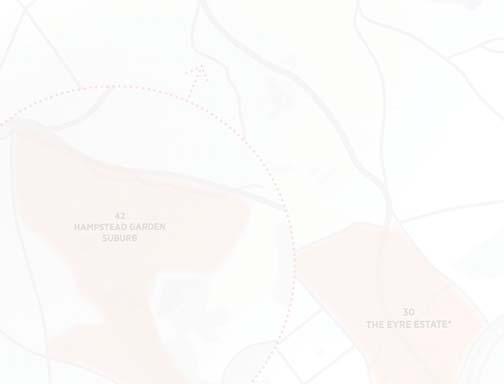
15. Clusters of ownership in London: Real estate value and governance
Patricia Canelas
Patricia is an architect and urban designer, with 10 years of professional experience, with some authored projects built. After getting her Masters in Architecture with specialization in Sustainability from UC Berkeley, she started to get involved in teaching and research. Patricia´s PhD is undertaken with the supervision of Nikos Karadimitriou and Claudio de Magalhaes.
keywords: real estate investment, portfolio management, clusters of ownership.
email: patricia.canelas.11@ucl.ac.uk

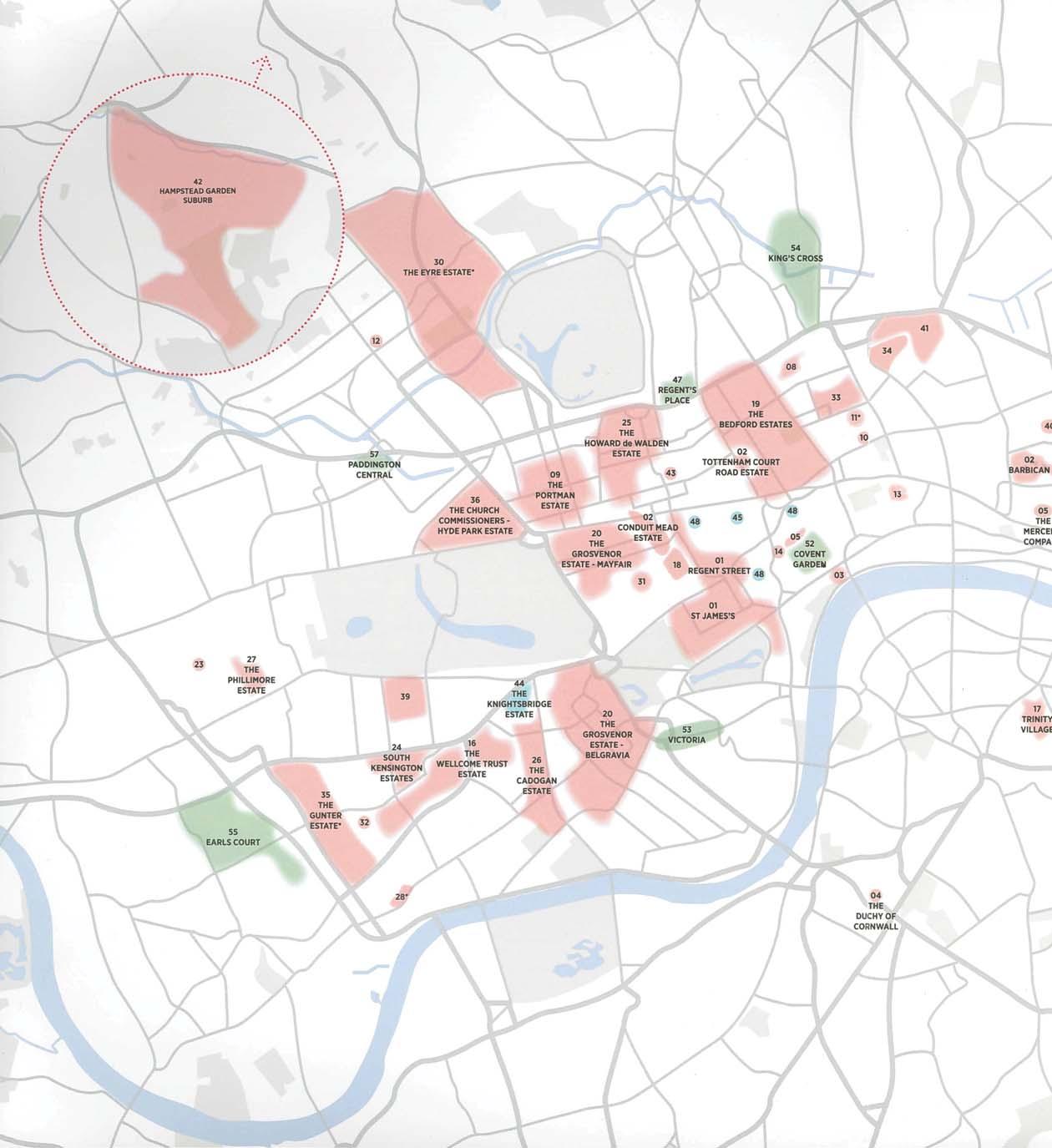
United Kingdom

Geographical & Urban Processes

Neighbourhood / District
Urban & Regional Development

In the London property market several institutions hold geographically concentrated property portfolios. The traditional London Great Estates, for example, hold several different properties, mainly a mix of residential, office and retail units, in relatively small geographical areas. Moreover, surveying the property portfolios of the listed property companies in the London Stock market, this research mapped the clustered portfolios held by listed property companies. By acquiring several existing buildings in confined areas, and pursuing a buy-to-rent strategy, these property companies become major landlords in an area, establishing what has been called the London New Estates (NLA 2013). These London New Estates are mostly being ‘carved’ amidst the consolidated city fabric. Most of the buildings acquired, which form the geographically concentrated property portfolio, come with tenants, defined uses, sometimes long leases, and in most cases are located in a tight urban policy context of Conservation Areas, and moreover areas with wellestablished stakeholders such as community and local business associations.
Despite these elements of a certain fixity – existing tenants, uses, leases, stakeholders, etc. - both the London Traditional and the New Estates maintain that they are actively managing their estates. The active management of this type of estate - geographically concentrated property portfolios - allows for tasks additional to the ones involved in the management of geographically dispersed property portfolios. When holding concentrations of several individual properties in one single relatively small geographical area, or what could be called clusters of ownership, it is possible to engage in ‘… organising tenants into cohesive business clusters or improving streetscapes and public parks’ (Hammond 2012).
According to Grosvenor, one of the Traditional London Great Estates, the strategy they have in place in their clusters of ownership is ‘Placemaking, as opposed to the management of discrete property assets’ (Grosvenor AR 2013, 26). According to Shaftesbury, holders of some of
the London New Estates, the active management of their clusters involves encouraging mixed-uses, new operators, new formats, and public realm improvements, which results in ‘Creating prosperity for tenants and sustainable rental growth’ (Shaftesbury AR 2012, 16). Furthermore, as Shaftesbury states, ‘With our concentrated ownerships, individual schemes frequently have beneficial impact on adjacent holdings, bringing cumulative and compound improvements to an area’ (Shaftesbury AR 2012, 9). This potentially indicates that clusters of ownership might allow for agglomeration economies or a ‘cluster effect’, where returns from the schemes as a whole are higher than the sum of its individual parts’ returns.
The research purpose is to investigate why property companies are concentrating their property portfolios in relatively small geographical areas. The research is structured around three main themes of enquiry: tasks, roles and return-risk profiles. For the tasks, the research intends to identify and explore what the active estate management of such places involves, alternatively called ‘place-making strategies’, as Adams and Tiesdell put it – ‘the connectivity between vision and delivery’ (2010, 187). Regarding the roles, considering that some of these clusters of ownership are being carved in the existing city fabric within Conservation Areas, pre-existing tenants and uses, and well-established stakeholders, the research explores the governance set-ups involved in the active management of these places. More specifically this research intends to explore how the emergence of large landlords in consolidated areas and their place-(re)making tasks are driven by synergies or conflicts and empower/ disempower, include/exclude pre-existing stakeholders. Finally, the research explores the clusters´ performance using the property industry key performance indicators, of income, capital and total returns, and portfolio volatility or risk performance; and compares the performance of the clusters against IPD, the property industry established benchmark.
30
Photo: NLA (Ed.) (2013)
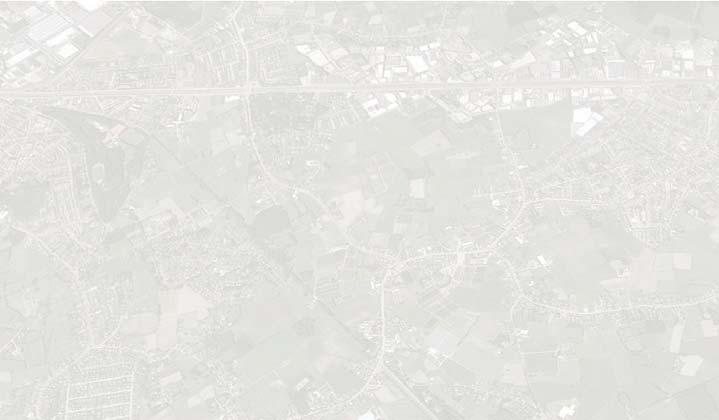
16. New Identities of the Extensive City: Metropolisation Processes in European Second-tier Cities
Rodrigo Cardoso
Rodrigo is a PhD candidate at the Bartlett School of Planning supervised by Professor Peter Hall and Dr Filipa Wunderlich. Between 2002 and 2011 he worked as an architect in a variety of projects in Portugal. He has an architecture degree from FAUP (Porto) and a Masters Degree from the Metropolis Program at UPC (Barcelona). His research is funded by a doctoral grant of FCT, Portuguese Ministry of Education and Science.
keywords: metropolisation, city-region, metropolitan governance, second tier cities
email: rodrigo.cardoso.11@ucl.ac.uk
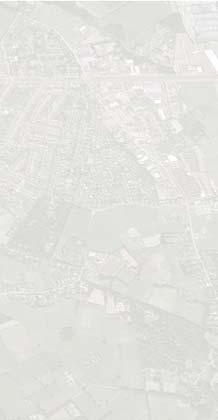





& Regional Development
& Urban Processes
BristolAntwerp Porto
Urban
Europe Geographical
Region
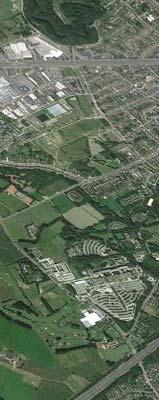


Second-tier cities in Europe have been experiencing greater engagement within policy and research contexts, as heralded by recent reports (OECD, 2012; ESPON, 2012), but they have yet to compensate for a tradition of relative neglect, when compared to large capitals and global cities which absorb the attention of academics, practitioners and policy-makers. While a relatively dense mesh of smaller urban centres is a defining feature of the European urban system (Christiaanse et al., 2009), their fortunes vary widely among European countries. A recent ESPON report (2012) directly connects this variation to national urban systems: second-tier cities in countries overwhelmed by dominant capitals (UK, France, Portugal) face greater neglect and tend to be less successful than those in countries with more horizontal urban systems (Germany, Netherlands). The former group is the concern of this research project.
Although earlier work has detected particular features of and strategies for second-tier cities, an important area of concern remains unexplored, namely the increasing integration of such cities with their wider urban regions. Second-tier and primate cities alike are embedded in large, polycentric and networked urban regions, but while the latter tend to play an historically dominant role in that region, second-tiers are normally less equipped with all sorts of urban functions and lack the hegemony and attractive capacity (of people, jobs, activities) of their larger counterparts, and therefore may have greater need to rely on their surroundings. This has been signalled by earlier work (ESPON, 2005) suggesting that the additional growth potential provided by polycentric integration policies was less significant for large dominant capitals than for many, less hegemonic medium-sized cities. Additionally, large scale integration has also been an important theme in research on ‘polycentric urban regions’ (PURs), but findings suggest that the lack of a leading city actually harms a coherent integrative vision (Dieleman and Faludi, 1998). Halfway between PURs and primate cities, it follows that second-tier cities may have both better reasons and greater ability to integrate more deeply with their urban region, through a process defined here as metropolisation (Indovina, 2004; ETH Basel, 2010).
The key conceptual breakthrough of metropolisation is that it looks at urban regions as ‘consolidating’ into extensive cities rather than cities ‘dispersing’ into formless
urbanised landscapes, thus representing an evolution from often judgemental views on extensive urbanisation, dominated by strong core-periphery assumptions. An important consequence is that the urban qualities and planning expectations previously reserved for the ‘proper’ city (in transport, urban design, regeneration etc.) are now extended to the territorial scale: ‘metropolisation happens when urbanisation gives way to the city’ (Nello, 2002). Through complementary urban functions and connective infrastructure, urban regions knit together and consolidate into a larger polycentric whole, able to reap the benefits of scale.
Arguing the particular need and ability of second-tier cities to engage in such processes and exploring how they take place is the purpose of this research. It will offer a comparative study of three European second-tier cities – Porto, Bristol and Antwerp – lying in countries suffering strong capital city dominance and embedded in urban regions characterised by polycentric and relatively dispersed urbanisation patterns.
Metropolisation is both a spatial-functional process happening ‘on the ground’ and a strategy implemented by local actors, but detecting the former is of little value if it remains unacknowledged by the latter. Therefore the study is divided into two parts that capture precisely these two aspects; to later discuss their mutual relation, as the institutional, cultural and spatial contexts of metropolisation do not necessarily correlate. The first part of the research compares the historical emergence of each urban region to assess how established cities and loose urban fragments knit together to create a larger, more equipped and more diverse city. Then the attention turns to the location and mutual relation of important urban functions, whose relative lack has been detected as a specific feature of second-tier cities (GöddeckeStellmann et al. 2011). How and why are they distributed throughout the urban region? How do they complement and connect to each other? Can we argue the emergence of a more complete and interdependent ‘extensive city’ of regional scale rather than a hierarchy of individual centres? The second part of the research asks how metropolisation is being produced (or not) by integration strategies of institutions and actors in each urban region, through interviews and the study of planning documents. Rigidly integrated systems can also be more affected by whatever goes wrong in one of their constituent parts: is integration always a good idea?
32
Photo: Google Maps
17. Vacant Urban Land: a Production Process in an English Context
Sonia Freire Trigo
Sonia is a qualified architect and urban planner. After 5 years of working experience in the private sector, she took an MSc on Regional and Urban Planning at University of Madrid (UPM). Her research interests revolve around urban regeneration policies and processes, urban planning and urban development processes. She is currently undertaking a PhD under the supervision of Dr Claudio de Magalhaes and Dr Ben Clifford.
keywords: vacant urban land, Lefebvre, land value.
email: sonia.trigo.11@ucl.ac.uk

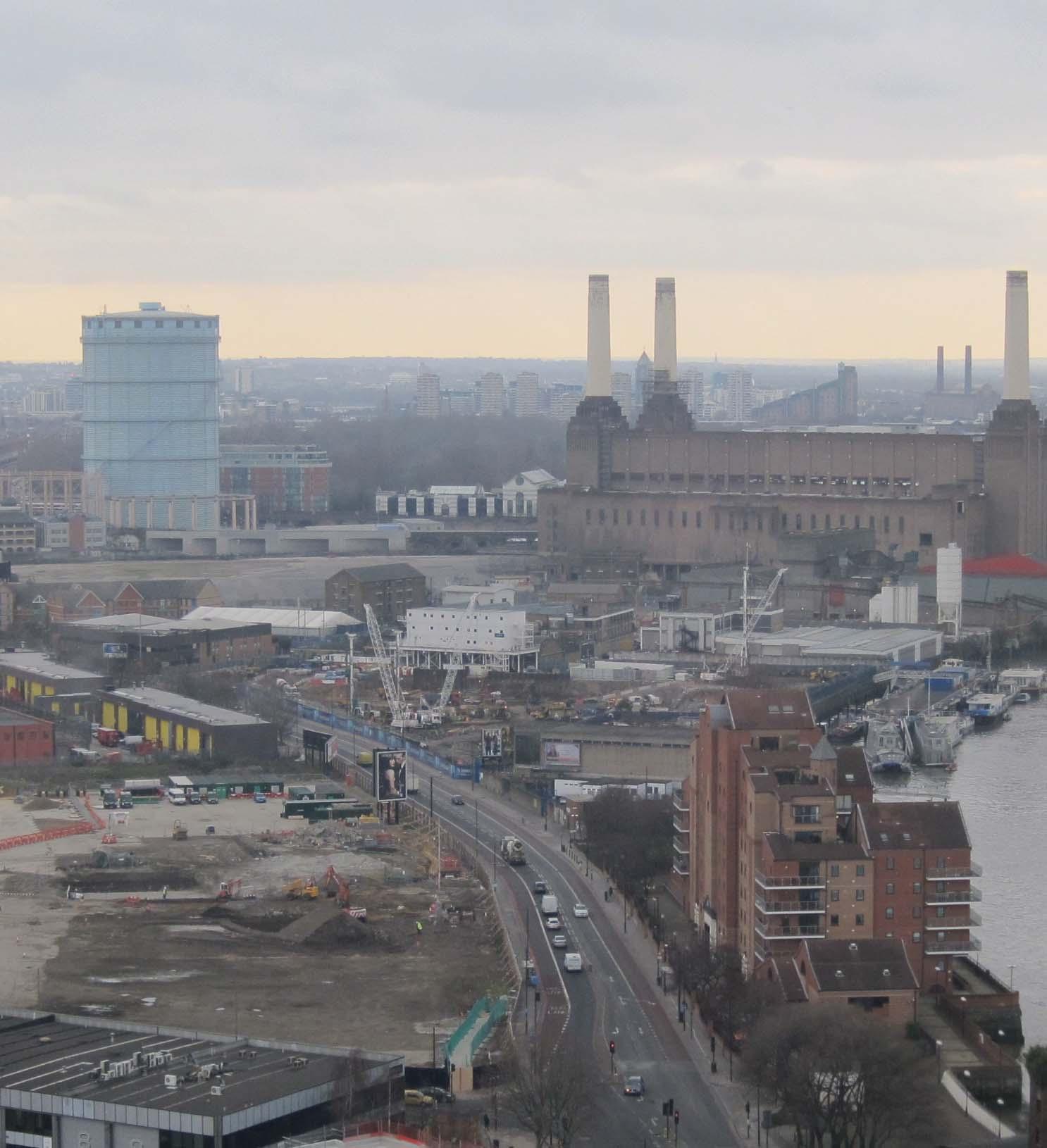


 Geographical & Urban Processes
Regeneration
United Kingdom City
Geographical & Urban Processes
Regeneration
United Kingdom City

The purpose of the research is to investigate the extent to which the interactions between agents and institutions determine the production process of vacant urban land and its long term existence.
The evolution of Previously Developed Land (PDL) in England – also known as Brownfield land - has been systematically monitored by the Government since the late 1990s and presented to the public in annual reports (HCA, 2013). An analysis of these reports shows that the evolution of PDL in England has experienced two different dynamics over time: 1) From 2002 to 2007, a period characterized by a considerable decrease of PDL; and 2) From 2007 to 2010, a period characterized by a steady increase of PDL. Despite what one might think in the light of these results, the truth is that the regeneration policies for PDL remained the same throughout the 2000s. The ‘urban renaissance’ agenda of the Labour Government tried to couple economic growth and sustainable development by allocating 60% of the much needed affordable housing supply on brownfield land (DETR, 1998; DETR, 2000, Whitehead 2012). These policies proved successful up until the credit crunch. From that moment onwards, the dependence of urban regeneration policies on the performance of the property market had a clear negative impact on the number of reused PDL sites (Wong and Schulz Bäing, 2010). In spite of this situation, the Coalition Government put forward a regeneration agenda with an even stronger propertyled approach when they came to power in 2010. In this sense, the ‘arbitrary targets on Brownfield land’ were removed (DCLG, 2011) in order to promote development where there was an existing private sector appetite. So far, this growth-led approach remains the same.
The previous account shows a shift in the way regeneration policies address the re-use of land: from a situation that encouraged the re-use of PDL as a way to achieve an ‘urban renaissance’ and a ‘sustainable development’ (UTF, 1999, 2005); to a situation in which regeneration is just focusing on those sites ‘ripe for development’ (Imrie, Lees and Raco, 2009), sites which already have the right conditions for growth. The main problem with this latest approach is that it totally overlooks the existence of (and solutions for) those vacant sites that are not ‘ripe for development’, namely the hardcore brownfield sites that seemed to have fallen out of the regeneration cycle (Dixon, Otsuka and Abe, 2011). Consequently, an even greater increase of PDL sites should be expected due to
the current economic conditions. Interestingly enough, this argument resembles the one used before the credit crunch to justify the existence of long term vacant sites. Then, most of the studies carried out came to the conclusion that only by providing ‘the right conditions for growth’ would these sites be brought back to (economic) ‘beneficial use’ (Dixon, Otsuka and Abe, 2011). In conclusion, it would seem that there are certain sites doomed to be vacant because they are simply unable to fit into the right economic framework. But, what if they were addressed from a different point of view – one that is not simply locked into an economic framework? Would it be possible then to find a different explanation for these long term vacant sites?
The present research will try to provide this new approach and poses the following questions:
1) What is the production process of (long term) vacant urban land? and
2) How does this production process affect the re-use of that land? Accordingly, the working hypotheses of the research are the following:
1. The production process of (long term) vacant urban land is both a conceptual and physical process determined by the interactions between the different actors and institutions involved in it.
2. The extent to which these interactions narrow down or open up the possibilities for different perceptions of the (exchange/use) value of land to happen, determines the vacancy period of land.
In order to test these hypotheses, the research will use a case study approach. The selected cases –long term vacant sites in London – will be explored through documentary research and semi-structured interviews, and analyzed with a Lefebvrian approach (Lefebvre, 1992). This dialectical approach will explore the interactions between:
a) the visions that different institutions have for these vacant sites (representation of spaces); b) people’s physical interaction with these vacant sites (spatial practices); and c) the different meanings that these vacant sites have for the people linked to them (representational spaces).
Ultimately, the research will try to prove that the problem of long term vacant urban land, although physical in its appearance, has an intangible dimension to it. This intangible dimension has to do with the management of the different perceptions of the value of land.
34
Photo: Sonia Freire Trigo
18. Social Interaction in Mixed-Tenure Neighbourhoods: A Comparative Analysis of Urban Regeneration in the UK and the Netherlands.
Tatiana Moreira de Souza
Tatiana is an architect and urban designer who, after working in practice for a few years, decided to undertake the MSc in Urban Regeneration at UCL, which led her to pursue a PhD under the supervision of Dr. Claire Colomb and Dr. Sonia Arbaci. She is passionate about all things related to housing and urban sociology. Her other interests include looking at interaction through social media, travelling and learning languages.
keywords: social interaction, urban regeneration, housing.
email: tatiana.souza@ucl.ac.uk
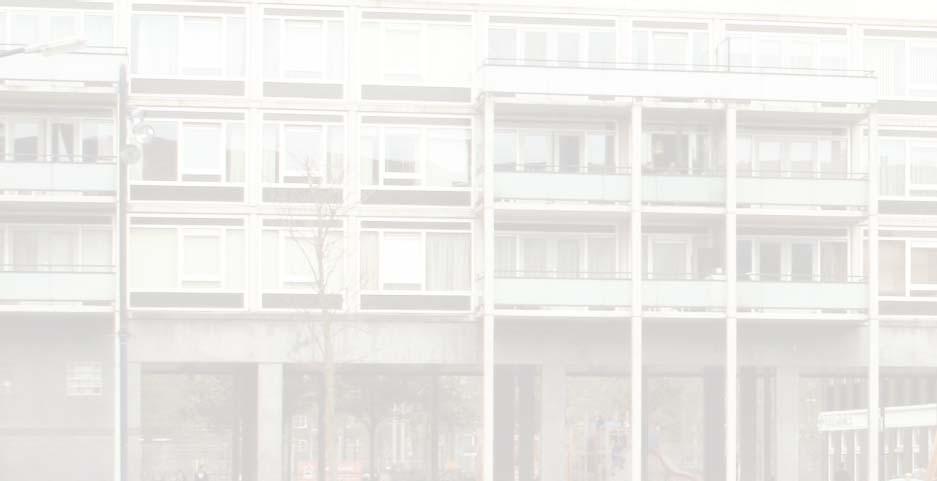

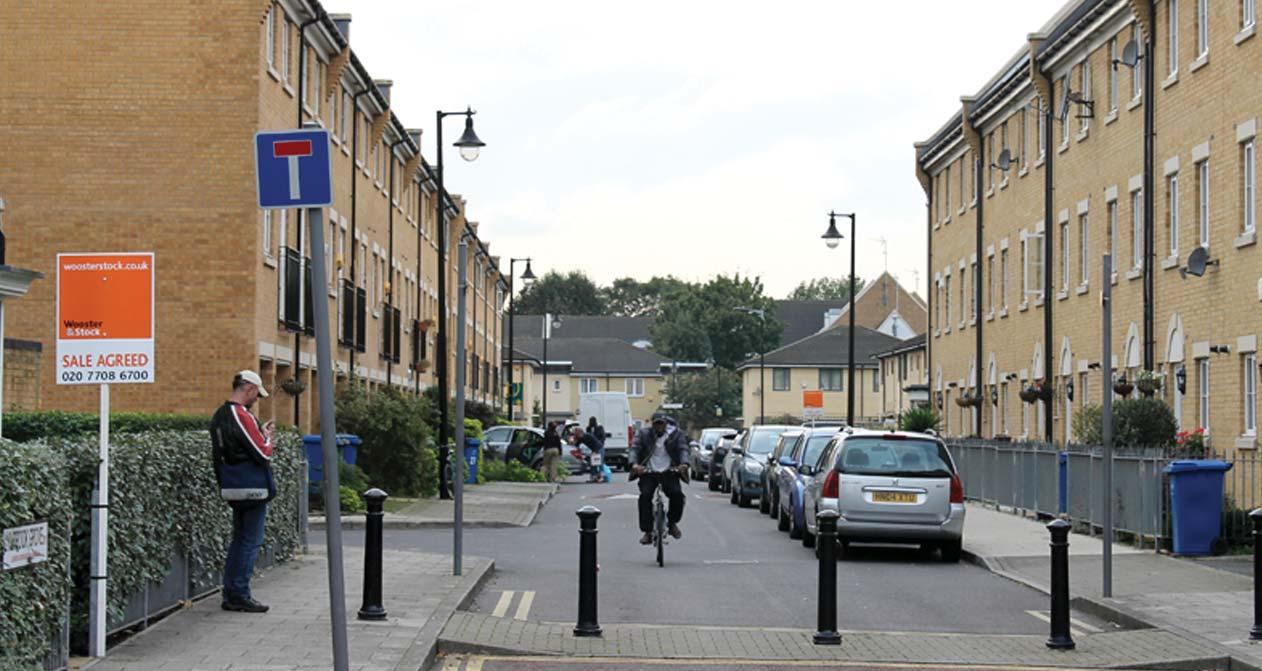


 Amsterdam
London
Europe
Geographical & Urban Processes
Regeneration
Neighbourhood / District
Amsterdam
London
Europe
Geographical & Urban Processes
Regeneration
Neighbourhood / District


In many of the countries in the Global North, physical redevelopment has been a common feature in areabased interventions aimed at tackling socioeconomic problems in deprived areas. Such interventions are rooted in ideas of social mix: a concept which refers to the creation of ‘socially balanced’ neighbourhoods. Although not new, the concept of social mix has regained attention in policy circles in the last twenty years and has been constantly implemented in order to combat social exclusion. This revival is underpinned by the concept of neighbourhood effects, which assumes that spatial concentrations of low-income groups are problematic as they generally perpetuate and reinforce the conditions of poverty and social exclusion (Wilson, 1987; van Ham and Manley, 2010; van Ham et al., 2011). As a result, policy interventions have focused on breaking poverty concentration through tenant dispersal–such as the Moving to Opportunity programme in the United States–and housing redevelopment programmes, which generally results in the demolition of local public or social housing in order to open space for housing and tenure differentiation, aiming to attract interest from households with higher incomes and guarantee a broader diversity of people.
Policymakers in various contexts widely assume that social mix will directly incur interaction and that households on lower incomes will benefit from interacting and establishing social relations with residents on higher incomes. In their study of British housing policy, Cole and Goodchild (2000) explain that urban policies in the context of area-based interventions are based on the assumption ‘that a more diverse mix will both deepen and widen social interaction in a positive way’ (2000, p.355). In the Netherlands, since 1997, housing policy has actively pursued the diversification of the housing stock in areas of concentration of ethnic minorities and low-income households with the objective of increasing
interaction between residents on different income levels (van Beckhoven and van Kempen, 2003).
My research aims to add further evidence to current debates on social mix policies and housing regeneration by focusing specifically on social interaction between residents on different housing tenures living in areas that have undergone extensive physical redevelopment. It examines if and how social relations are built and whether the use of public facilities and amenities has any impact on the development of social interaction between residents. It adopts a mixed methods approach, with case studies in the UK and the Netherlands. The choice of countries has to do with the very similar approach they have taken towards regeneration–largescale restructuring and insertion of housing for owneroccupation; improvements to the existing infrastructure and creation of new facilities—and the fact that, despite the recent changes to the housing allocation system in the Netherlands, its social housing sector still houses a wide range of income groups, whereas in the UK the social housing sector has been undergoing a process of residualisation, setting the priority criteria to the most vulnerable portions of the population.
Overall, my research aims to bring further evidence to the discussion on social mix, urban regeneration and housing policy by giving some insight on the nature and extent of social interaction among different housing tenures, especially in areas that have undergone urban regeneration. It also aims to shed further light on national and local interpretations of social mix and how they are translated spatially and through the availability of local facilities. Finally, it aims to contribute to the discussion on social relations being built as a result of homophily and propinquity, by analysing social interaction at different physical scales.
36
Photos: Tatiana Moreira de Souza
19. Gated Communities in China

Tingting Lu
Tingting Lu is a planner and researcher of urban studies, especially in the field of urban governance and urban China study. She attained the MSc of International Planning and Development in Cardiff University, and continued to take the PhD in UCL afterwards, under the supervision of Professor Fulong Wu and Dr. Fangzhu Zhang.
keywords: gated communities, urban China, commodity housing, urban governance.
email: tingting.lu.11@ucl.ac.uk


 Urban & Regional Development
World Geographical & Urban Processes
Neighbourhood / District
Urban & Regional Development
World Geographical & Urban Processes
Neighbourhood / District

Gating is not something new in China, which could be seen from the fortress of the Forbidden City; whereas ‘gated communities’ are new terms used in Chinese urban study. Since the termination of the stateled work unit housing system at the end of the 1990s, new Chinese residential developments have begun taking the forms of gated communities. Puzzles and doubts on Chinese gated communities have been focused on several aspects:
1) whether Chinese gated communities are simple mimicries of western gated communities; 2) social changes of everyday urban life in gated communities in the post-reform era; 3) the dominant economic and political actors behind the deeply penetrated urban gating phenomenon. From the practice of gated communities in the Western context, the disclosure of fear, the privatization of community service, and the aesthetical consumption, can be seen to constitute the mainstream driving forces for the development of gated communities. Besides, while anthropologists are more willing to view gated communities from the ideology of ’urban fear’, namely fear of crime and fear of others (Low, 2003), another branch of scholars tend to adopt the ’club goods’ theory to explain the private ownership and privatized service of gated communities (Webster, 2001; Goix and Webster, 2008). Unfortunately, little is known about the development and governance of gated communities in post-reform China. The globalization theory tries to consider gated communities as a worldwide proliferation of American culture and consumerist values. However, the local specificities in different regions challenge it from different political and socioeconomic spheres. In China, the commoditization process of home ownership and public space is led by the central and local government, with the private sectors intensively investing in gated communities projects. The government is simultaneously the land owner, provider and regulator, and development and governance of gated communities is inevitably related to strong state intervention. Accordingly, Chinese gated communities are not simple private neighbourhoods formed by the
retreat of a neoliberal state from providing public goods. On the other hand, the central state does decentralize some responsibility for providing community services and governance to the private property management companies and home owner associations; such as security control, sanitation, and facility maintenance. The private sectors therefore encounter the weakness of the central states in grassroots governing. It leads to the fact that post-reform China is gradually conveying an institutional shift to entrepreneurial governance in the urbanization processes. Under the more marketoriented economy, Chinese socio-economic polarization enlarges, which further restructures everyday life in urban China. On the demand side, urban residents, especially the emerging middle-class, have been seeking for improved living conditions and efficient community services. The function of gates and the level of services are different among high-end gated communities and other gated communities, due to the “membership fee” differences of respective gated community clubs. For example, high-end gated communities are equipped with private gyms and kindergartens, while white-collar gated communities have no private parking space for residents. The traditional collective activities of Chinese urban living have been substituted by the emphasis on individualism. However, residents in Chinese gated communities are not lacking the sense of collective identity. Based on a three-year field work in Wenzhou, China, this essay seeks to explore more specific institutional, economic, and social factors of gated communities in post-reform China. Case studies and interviews are used to explain the overwhelming phenomenon of urban gating from different perspectives, including local authorities, private developers, and residents. This essay intends to argue that gated communities in China are not the stereotypes of gated communities in North America which are driven by middle-class consumption and pursuit of safety; they follow the trajectory of the developing entrepreneurial city in China.
38
Photo: Tingting Lu
20. London 2012: Legal Geography of Olympic Place Marketing
Xianlu Bai
Xianlu Bai recently finished her PhD in urban studies. Her research is on the place marketing aspect of the London 2012 Olympic Games and the complexity of different geographies and interest groups surrounding it. She was under supervision of Professor Nicholas Phelps and Dr. Nikos Karadimitriou at the Bartlett. She studied the MSc in Urban Planning at The University of Hong Kong before coming to London.
keywords: Olympic Games, legal geography, place marketing.
email: xianlu.bai@gmail.com

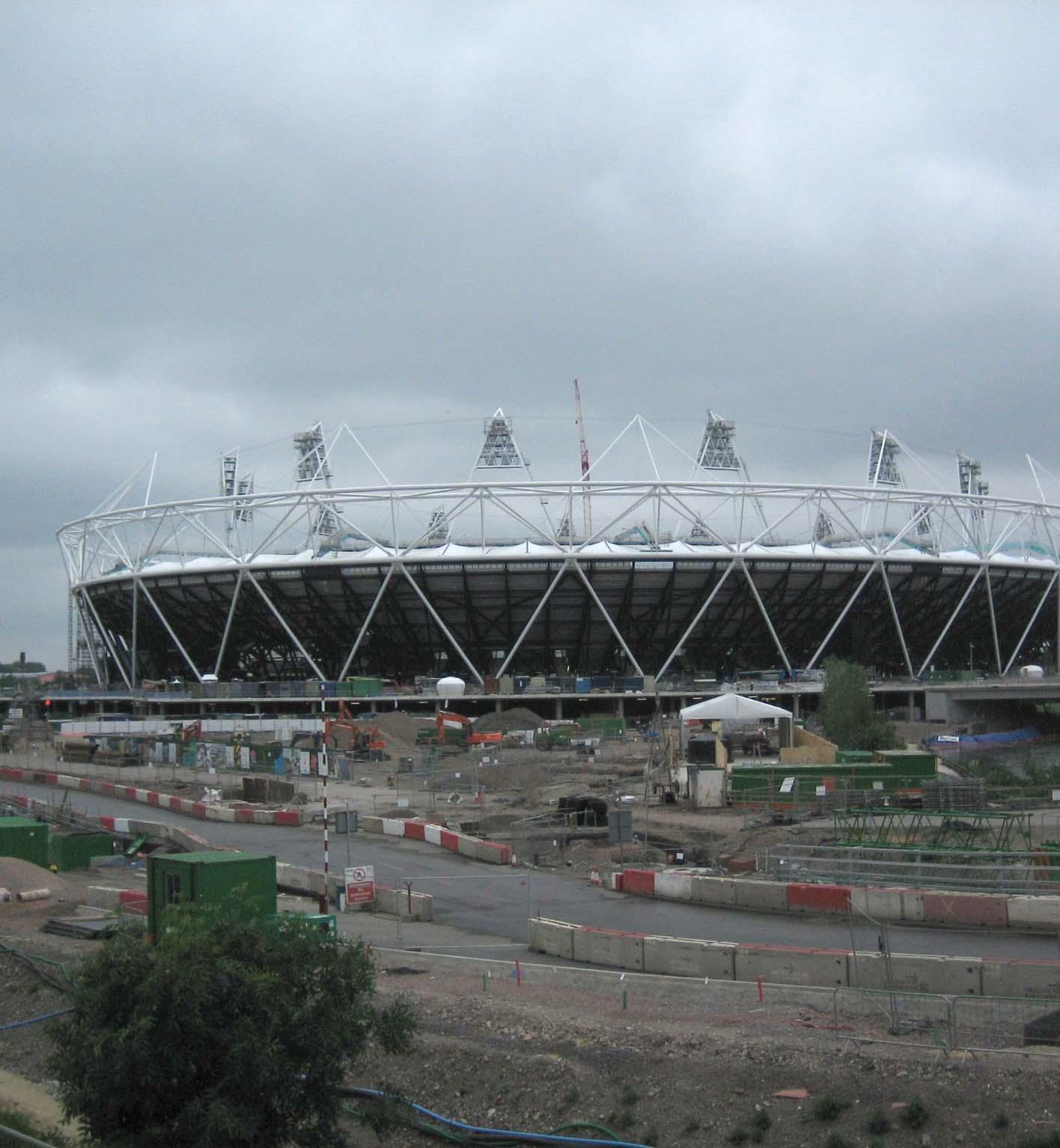


Urban & Regional Development Mechanisms of Planning and Policy
Kingdom Region
United

This article is developed from my PhD thesis
‘Legitimating London 2012: Urban mega-events and the geography of Olympic place marketing’ in which I investigate the place marketing aspect of the London 2012 Olympic Games and the complexity of different geographies and interest groups surrounding such urban mega-events, with theories on different levels of abstraction.
It appears that the discussion on neo-liberalisation of urban mega-events and the details of place marketing have rarely been linked to questions of the legal arrangements surrounding them. There is a distinct but limited literature of legal geography in which law, space and society are believed to be related and reciprocally constitutive (Delaney et al, 2001). With Olympic marketing rights issues attracting more attention recently in law studies (see Johnson, 2011; Louw, 2012), the empirical research provides evidence of the complicated legal geographies that become inscribed into place marketing and presumably other contractual arrangements surrounding major events, such as the Olympics. It argues that mega-events, in particular the Olympic Games, have become more and more powerful and controlling by demanding specific legislations and contracts from the host country, city and even local councils so that localities on different geographical levels - from national to local governments - have to comply with them for the benefit of the Olympic brand owners.
Reviewing individual cases gathered in the empirical research, some local governments hosted part of the Games but refused to sign the Host Borough contract;
some local governments did not host any Games but eagerly signed the Contract and were therefore titled a Host Borough; some local governments did not sign the Contract but are widely considered to be a Host Borough; some local governments invested heavily in hosting the Games and received a good return; some other local governments invested heavily in hosting the Games too but could barely fill the stadium; and some local governments did not want to have anything to do with the Olympics. Furthermore, all the above mentioned local councils could be bordering one another.
The geographies of Olympic place marketing are not following the clear local-municipal-national-international hierarchy, as the author presumed before the interviews; they are in fact mixing and overlapping. In the case of the 2012 Games, the location of a sport venue, infrastructure, tourist attractions and natural scenery, a decision made for or against the Host Borough/County contract with LOCOG and/or fiscal capacities could all affect the place marketing strategies and practices of a place. This is why interviews across and around London are not neatly grouped, and the complex geographies of place marketing cut through the clear boundaries and hierarchies of places and make it impossible to draw definite lines.
It has become very obvious that it was the Olympic law and legislation that shaped the different geographies of place marketing in the case of London 2012, where very strict enforcement was applied ‘in the broadest possible terms’ (House of Commons Standing Committee D, 2005).
40
Photo: Xianlu Bai

21. Time Reveals Truth: a Retrospect of the Redevelopment Case of the Urban Village in Xi’an China
Xiaoqing Zhang
Xiaoqing Zhang is a PhD candidate in BSP under the supervision of Professor Nick Gallent and Dr Sonia Arbaci. Her research interests focus on social exclusion and spatial segregation, migrant enclaves, and citizenship rights. Her thesis examines the changes of villagers’ living quality and social status during the redevelopment of urban villages in China.
keywords: urban village, social inclusion, Hukou, redevelopment.
email: xiaoqing.zhang.09@ucl.ac.uk




 World Geographical & Urban Processes Regeneration
World Geographical & Urban Processes Regeneration
Neighbourhood / District

This essay presents a redevelopment case of the urban village that I am working on during my fieldwork. Urban villages are ‘villages in the city’. They used to be suburban or rural villages but are gradually encircled by the expansion of urban areas. The massive urbanisation over the past twenty years has produced more than 200 urban villages in Xi’an China. From the early 2000s, the local government began to use the strategy of largescaled clearance in the name of urban beautifying and social inclusion, demolishing and redeveloping most of the urban villages. N village was one of them. However, the village that was redeveloped ten years ago is facing another redevelopment recently, which evokes intensive conflicts and controversies. The irony is that when N village was redeveloped in 2004, it was made a demonstrative case by the local government and some scholars, as the indigenous villagers were considered to fully participate in the redevelopment process, and the living environment/ housing quality was greatly improved. In this case, how did the village get into this complicated situation? After a close study of N village, some interesting findings emerged, which challenge the mainstream perspectives described by academic papers and media.
First of all, the indigenous villagers in many urban villages are usually depicted as ‘windfall pickers’ in the redevelopment process, during which they get large amount of compensations and even several replacement dwellings. This case, among several other cases that I am working on, tells a different story. As shown by the questionnaires, more than 67% of the villagers saw a decline in quality of life during the past ten years, in terms of community environment, working opportunity and access to welfare schemes. More than half also expressed insecure feelings about their future lives.
Secondly, villagers’ self-expressions and participations during the process of redevelopment were not as full as the local government and scholars expected. Due to the lack of information transparency, villagers were not able to present as a counterpart and negotiate with the local government and the developer from an equal position. Besides, without professional assistance, some decisions made by the villagers were not actually practical.
Thirdly, another issue is the different interpretations and expectations of inclusion between the villagers and the government. The key word here is ‘Hukou’. Hukou in China refers to the residential registration system that was introduced during the 1960s for the purpose of population control and welfare distribution. People with different Hukou status are entitled to different social welfares. As China develops, however, this system has become a paradox that both facilitates and impedes social development. On one side, the government tries to eliminate the huge inequality that is brought by Hukou; on the other side, the implementations of many social policies still rely on the system. Indeed, one of the main rationales behind the second redevelopment is ‘social inclusion’, which is interpreted by the government as ‘turning the villagers into urban people with access to social welfares that are enjoyed by the urban citizens’. However, my interviews show that the perspectives and expectations of the villagers are quite different, and more than just an urban Hukou status.
Last but not least, if the case of N village is compared with other cases and is put in a broader policy context, other problems can be identified not only relating to a single case, but also concern the massive redevelopments of the urban village. The unemployment rate in N village is found to be the highest (more than 86%) and the access to social welfare schemes the lowest (less than 9%), amongst the other cases. In other words, the nonfeasance of the local government on re-employment assistance and the inefficient/problematic welfare schemes also contribute to the situation that confronts N village today.
Time reveals truth. Although N village is a single case redeveloped ten years ago, a close study still reveals many crucial problems that existed in the redevelopment process, and sound the alarm about the current overwhelming phenomenon of urban village redevelopment. If the problems identified are not dealt with seriously and efficiently, the predicament that confronts N village will probably recur in many ways among other urban villages.
42
Photo: Xiaoqing Zhang
22. Local Politics Transformation and the Governance of Flagship Culture-led Redevelopment in China
Yixiang Sun
Yixiang is a third year PhD student at the Bartlett School of Planning under the supervision of Professor Mike Raco and Professor Nick Phelps. Her research has been primarily focused on culture-led redevelopment, urban governance, and local political transformation with particular interests in the linkage between flagship culture-led redevelopment and local governance transition in China.
keywords: urban governance, local politics, entrepreneurialism, culture-led regeneration.
email: yixiang.sun.11@ucl.ac.uk




 World Geographical & Urban Processes Regeneration
Neighbourhood / District
World Geographical & Urban Processes Regeneration
Neighbourhood / District

Since Harvey published his neoliberal discourses on governance transformation twenty-five years ago, the notion of urban entrepreneurialism has been widely debated in academic discussions on political reorganisation in contemporary regeneration practices worldwide. Concerns have been raised about flagship urban redevelopment schemes with cultural elements that aim to utilise culture as the ‘source-ground’ (Miles and Paddison, 2005) providing a painless panacea for the local social and economic crisis facing post-industrial cities. Such developmental schemes, according to Hall and Hubbard (1998 :8), lead to ‘cultural transformations of previously productive cities into spectacular cities of and for consumption, populated by a harmonious and cosmopolitan citizenry’ and attempts to ‘generate new forms of entrepreneurialism within urban populations’ (Raco and Gilliam, 2012). For a growing number of scholars, the elitist and growth-centred stance embedded in entrepreneurial policy-making in those culture-led regenerative projects inevitably incurs social injustice and marginalisation (Ong, 2007). A pro-growth coalition between international investors and local-level authorities has been identified in one of Shanghai’s major cultural redevelopment initiatives, in which private sectors and governmental organisations collaborate in the property development process, but local neighbourhoods become the excluded actor (He and Wu, 2005). Although much has been written on politics in flagship cultureled programmes and actors that are involved in the property development process, it remains less clear how entrepreneurial practices are being implemented and delivered in this type of urban redevelopment, nor the institutional challenges it poses to local power dynamics. In addition, theories of entrepreneurialism are mostly built on a Western-centrism and generated from the post-War experience of countries with higher levels of democracy, while its adaptation and variation under authoritarian regimes are surprisingly under-presented. Even in studies trying to find examples in non-Western states, it is often the comparatively more prominent and internationalised
cities in those regions that they focus on, such as Hong Kong, Singapore, and Shanghai (e.g.Jessop and Sum, 2000, Wu, 2000).
It is in this context that the author conducted an investigation on the implementation of entrepreneurial policies in a culture-led flagship redevelopment project in one of China’s inland cities - the city of Xi’an. This research explores how Chinese local authorities and urban elites adopted the concept of entrepreneurialism as their tactic in implementing culture-led redevelopment policies, in order to reconcile tensions and justify controversial agendas. It draws on a single case study of a landmark culture-led redevelopment mega-project in the city of Xi’an, one of China’s major interior regional centres. Drawing on data collected from semi-structured interviews with local policy makers, planners and scholars, and an analysis of municipal master plans, governmental reports, strategic schemes and other documentary and archival materials, it argues that the utilization of entrepreneurial policies in this specific project cannot be singled out from broader changes happening at both municipal and national level; while its success accelerates governance transformation in a wider context. Meanwhile, entrepreneurial practices in China show a significant difference to those in the Western context in terms of the degree of government intervention, as local authorities play a principal role in leading the redevelopment politics, while influence from private sectors and communities is still limited. In this way, the paper may contribute to understandings of the existing literature on contemporary urban governance, culture-led redevelopment and comparative urbanism, and help to deepen the knowledge of urban political implementation under the non-Western context, with a focus on local factors in less globalised cities in China. It concludes that there is no universal framework of entrepreneurialism fitting all circumstances and therefore it is the task for policy-makers and academia to think about how to tailor it for the best practice in a specific localised context.
44
Photo: Yixiang Sun
23. Neighbourhood Attachment, Neighbourly Interaction and Community Participation within the context of Urban Village Redevelopment: A Case Study of Guangzhou, China
Yuqi Liu
Yuqi is a PhD student in the Bartlett School of Planning. Her research interests include urban redevelopment, social cohesion and public participation. She got her B.Sc. and M.Sc. in China. She has participated in some urban planning projects and published several papers in academic peer-reviewed journals. Recently, she is pursuing her PhD degree under the supervision of Professor Fulong Wu and Dr. Fangzhu Zhang.
keywords: neighbourhood attachment, community participation, neighbourly interaction, urban village redevelopment, China.
email: yuqi.liu.13@ucl.ac.uk

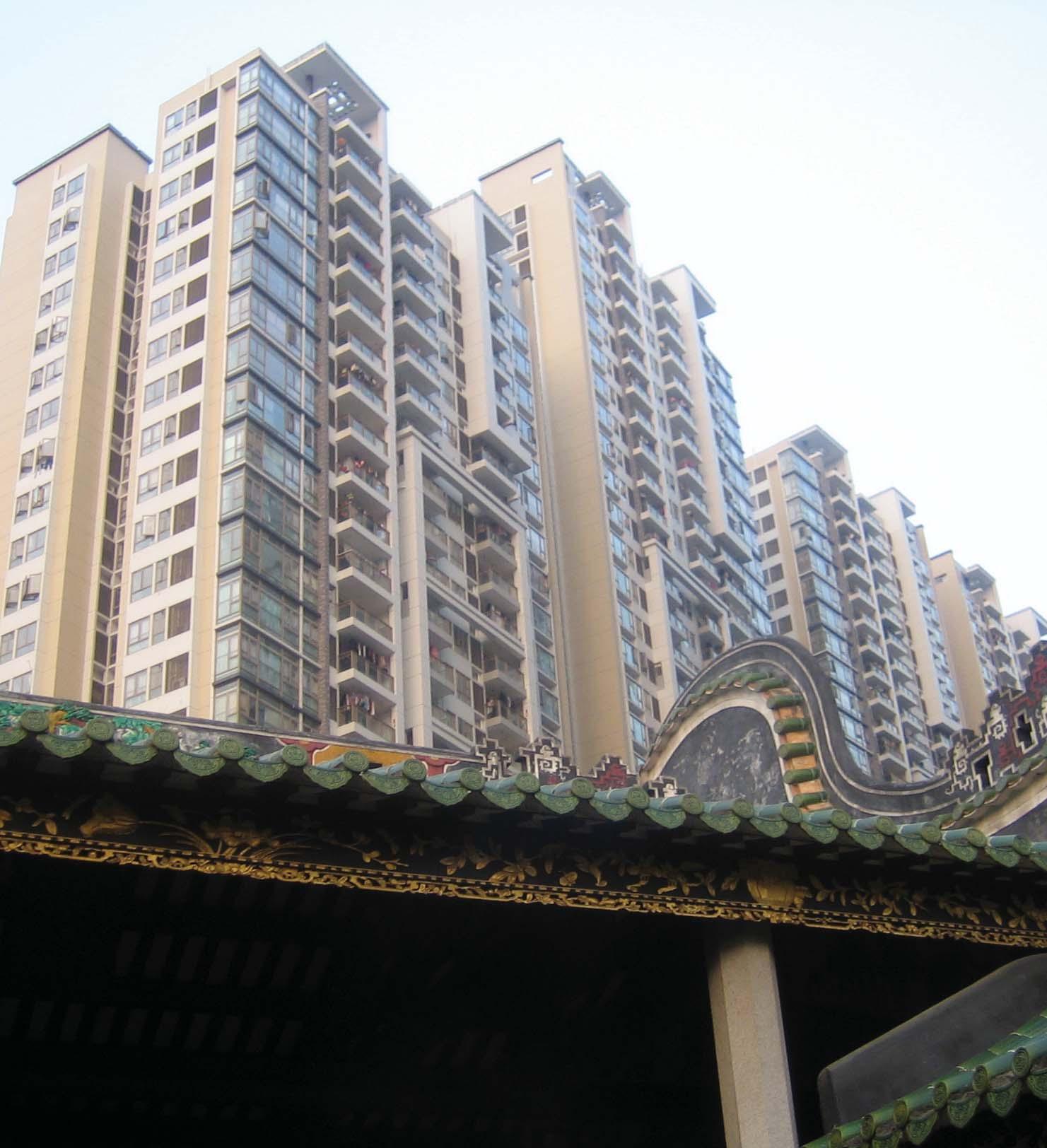


World Geographical & Urban Processes
Neighbourhood / District Urban Design & Governance

Against the backdrop of globalization, neoliberalization and the retrenchment of the state, cities of Western countries have been under the threat of increasing social inequality, instability and insecurity over the last three decades (Caldeira, 2000; Hamnett, 2001,). The issue of social cohesion has become a major concern for policymakers, scholars, and the media (Forrest and Kearns, 2001). Chinese cities have been undergoing a remarkable socio-spatial transformation (Wu et al., 2007; Li and Wu, 2008; Wu, 2010). The state is central to urban socio-spatial transformation in China. In recent years, municipal governments of most large cities in China have launched a campaign of urban village1 redevelopment, which has spawned a large amount of resettlement housing for indigenous villagers who lose their self-built housing.
Previous studies on urban neighbourhoods in China have mainly focused on the extent of neighbourhood attachment, neighbourly interaction and community participation, devoting insufficient attention to the interrelationships among them (Tomba, 2005; Forrest and Yip, 2007; He and Wu, 2007; Xu, 2008; Zhu et al., 2011; Wu, 2012). However, a thorough understanding of the interplay among neighbourhood attachment, neighbourly interaction and community participation is fundamental to the cultivation of social cohesion in the resettlement neighbourhoods. This research aims to examine the mechanisms of neighbourhood attachment, neighbourly interactions and community participation in on-site resettlement housing communities. In particular, it focuses on how urban village redevelopment influences these mechanisms and how these mechanisms vary between different social groups. We try to address the following questions: what are the relationships between neighbourhood attachment, neighbourly interaction and community participation? Do the mechanisms of neighbourhood attachment, neighbourly interaction and community participation vary between different kinds of neighbourhoods and different social groups?
Based on data collected through two rounds of questionnaire surveys in 20 urban villages and Liede Community (the first resettlement housing community) in Guangzhou, we apply the path analysis model to analyse the interrelationships among neighbourhood attachment, neighbourly interaction and community participation. Our empirical results have shown that residents’ attachment to neighbourhoods is influenced more by neighbourly interaction than residential satisfaction. In this light, our findings challenge the Community Lost hypothesis, focusing on the declining role of local social ties in residents’ daily lives. We have also found that strong neighbourhood attachment significantly encourages residents to participate in community affairs, while local hukou2 leads to active community participation in resettlement housing communities. These findings have confirmed the traditional wisdom that neighbourhood attachment and institutional entitlement play important roles in shaping community participation.
This research has shed new light on the interrelationships among neighbourhood attachment, neighbourly interaction and community participation by using the path analysis. It has contributed to the literature by first probing into the impact of the urban village redevelopment project on neighbourhood cohesion in the Chinese context. For indigenous residents living in resettlement housing communities, the replacement of inhabitants and the transformation of neighbourhood management may undermine their traditional tightknit and place-based social ties in the neighbourhoods. For non-indigenous residents, they normally regard the neighbourhood only as a place providing temporary shelter and therefore are not willing to participate in daily activities in the community. Therefore, in order to cultivate social cohesion and cement neighbourly relationships in the resettlement housing communities, it is advisable for policymakers to strengthen interactions among different social groups, and include all residents in community affairs.
(1) Urban village: refers to a kind of transitional neighbourhood consisting of farmers’ self-built and low-quality settlements, which have gradually formed in the process of the rapid expansion of Chinese cities since the 1990s (Liu et al., 2010 and WU, F. 2013).
(2) Hukou: refers to a record in the household registration system required by law in the People’s Republic of China (Chan, 2009).
46
Photo: Yuqi Liu
47 Geographical & Urban Processes CONTRIBUTION Mechanisms of Planning & Policy Theories & Methods LOCATION United Kingdom World Europe SCALE Neighbourhood / District Region City TOPIC Urban Design & Governance Regeneration Urban & Regional Development
References
3. Beyond State and Market: Civil society and the coproduction of project governance
Altschuler, A and Luberoff, D. (2003) Mega-Projects: The changing politics of urban public investment. The Brookings Institute.
Beck, U. (1992) Risk Society: Towards a new modernity. Sage. Crouch, C. (2011) The strange non-death of neoliberalism. Polity Press.
Dewey, J. (1927) The Public and its Problems. George Allen and Unwin Ltd: London.
Flyvbjerg, B. Bruzelius, N and Rothengatter, W. (2003) “Megaprojects and Risk: An Anatomy of Ambition”. Cambridge University Press.
Habermas, J. (1992) Legitimation Crisis. Polity Press.
Hall, P. (1980) Great Planning Disasters. University of California Press.
HS2Ltd/ Department for Transport (2011) High Speed Rail: Investing in Britain’s future – Consultation.
Salamon et al (1999) Global Civil Society Dimensions of the Nonprofit Sector, Johns Hopkins University.
Taylor, M and Warburton, D. (2012) Legitimacy and the Role of UK Third Sector Organizations in the Policy Process. Voluntas: International Journal of Voluntary and Nonprofit Organizations, 14(3), pp.321–338.
Walzer, M. (1990). The Communitarian Critique of Liberalism. Political Theory, 18(1), 6–23.
4. Between Co-operation and Commons: the Case of Collective Housing in UK
Armitage, D. (2008), Governance and the commons in a multilevel world, International Journal of the Commons, 2(1), 7-32.
de Peuter, G. and Dyer-Witheford, N. (2010), “Commons and Cooperatives,” Affinities: A Journal of Radical Theory, Culture, and Action, 4(1), 30-56.
Gibson-Graham, J.K. (2006), Diverse economies: performative practices for ‘other worlds’ Progress in Human Geography, 32(5), 613–632.
Hodkinson, S.N. (2010), Housing in Common: in Search of a Strategy for Housing Alterity in England in the 21st Century, in: Fuller D; Jonas AEG; Lee R (Ed) Interrogating Alterity
Large, M. (2010), Common Wealth for a free, equal, mutual and sustainable society. Stroud: Hawthorn Press.
7. Urban Form in Taiwan.Taipei City: A Case Study
Alexander, C., Ishikawa, S., & Silverstein, M. (1977). A pattern language: towns, buildings, construction (Vol. 2): Oxford University Press, USA.
Busch, R. (2012). Every city has its own needs and its own DNA. urbanDNA, 1, 2.
Katz, P., Scully, V. J., & Bressi, T. W. (1994). The new urbanism: Toward an architecture of community (Vol. 10): McGrawHill New York.
Steadman, P., Bruhns, H. R., Holtier, S., Gakovic, B., Rickaby, P. A., & Brown, F. E. (2000). A classification of built forms. [Article]. Environment and Planning B-Planning & Design, 27(1), 73-91.
Whitehand, J. W. R. (2003). From Como to Alnwick: In pursuit of Caniggia and Conzen. Urban Morphology, 7(2), 69-72.
Whitehand, J. W. R., Gu, K., Whitehand, S. M., & Zhang, J. A. (2011). Urban morphology and conservation in China. [Article]. Cities, 28(2), 171-185.
Duan, J., & Qiu, G. (2009). Conceptus of Foreign Urban Morphology. Nanjing: Southeast University Press.
8. Planning Models and Policy Mobilities: Urban planning in Rio de Janeiro in the age of megaevents
Cochrane, A., & Ward, K. (2012). Guest editorial: Researching the geographies of policy mobility: Confronting the methodological challenges. Environment and Planning A, 44(1), 5-12.
Friedmann, J. (2010). Crossing borders: Do planning ideas travel? Crossing Borders: International Exchange and Planning Practices. London: Routledge, 313-328.
Healey, P. (2010). Introduction: The transnational flow of knowledge and expertise in the planning field. Crossing borders: International exchange and planning practices, 1-25.
McCann, E. (2011). Urban policy mobilities and global circuits of knowledge: toward a research agenda. Annals of the Association of American Geographers, 101(1), 107-130.
Peck, J., & Theodore, N. (2010). Mobilizing policy: Models, methods, and mutations. Geoforum, 41(2), 169-174.
Stone, D. (2004). Transfer agents and global networks in the ‘transnationalization’of policy. Journal of European Public Policy, 11(3), 545-566.
48
10. Public Space as a Functional Possibility
Alexander, C. (1979). The timeless way of building. USA: Oxford University Press.
Franck, Karen, & Stevens, Quentin. (2006). Loose space: Possibility and diversity in urban life: Routledge.
Gehl, J., & Koch, J. (2001). Life between buildings: using public space: Arkitektens forlag Copenhagen.
Latour, Bruno. (2005). Reassembling the Social: an Introduction to Actor-Network-Theory: Oxford: Clarendon, 2005.
Law, John. (2009). Actor network theory and material semiotics. The new Blackwell companion to social theory, 141-158.
Whyte, W.H. (1980). The social life of small urban spaces. Washington, DC: Conservation Foundation.
11. Understanding Material Participation in “Eventual” Urbanism
Andres, L. (2013). Differential Spaces, Power Hierarchy and Collaborative Planning: A Critique of the Role of Temporary Uses in Shaping and Making Places. Urban Studies, 50(4), 759–775.
Arnstein, S. R. (1969). A Ladder Of Citizen Participation. Journal of the American Institute of Planners, 35(4), 216–224.
Awan, N., Schneider, T., & Till, J. (2011). Spatial agency : other ways of doing architecture. London: Routledge.
Bennett, J. (2010). Vibrant matter : a political ecology of things. Duke University Press.
Bishop, P., & Williams, L. (2012). The temporary city. Abingdon: Abingdon : Routledge.
Coole, D. H., & Frost, S. (Eds.). (2010). New materialisms : ontology, agency, and politics . Duke University Press.
Latour, B. (1987). Science in action : how to follow scientists and engineers through society. Cambridge, Mass Milton Keynes: Cambridge, Mass : Harvard University Press.
Latour, B. (2005). From Realpolitik to Dingpolitik: or How to make Things Public. In P. Weibel & B. Latour (Eds.), Making things public: atmospheres of democracy : [exhibition], ZKM, Center for art and media Karlsruhe, 20.03.-03-10.2005. Cambridge: (Mass.) : MIT press.
Marres, N. (2012). Material Participation: Technology, the Environment and Everyday Publics. Basingstoke: Palgrave.
Tonkiss, F. (2013). Austerity urbanism and the makeshift city. City, 17(3), 312–324.
Yaneva, A. (2011). Mapping controversies in architecture. Burlington: Ashgate Pub. Co.
12. Placing the Digital Economy: the Spatiality of Work in ‘Tech City’, London
Amin, Ash, and Stephen Graham. 1997. ‘The Ordinary City.’ Transactions of the Institute of British Geographers 22 (4): 411–29.
Florida, Richard. 2002. The Rise of the Creative Class: And How It’s Transforming Work, Leisure, Community and Everyday Life. Basic Books.
———. 2005. Cities and the Creative Class. New York: Routledge. Foord, Jo. 2013. ‘The New Boomtown? Creative City to Tech City in East London.’ Cities 33: 51–60.
Hutton, Thomas A. 2006. ‘Spatiality, Built Form, and Creative Industry Development in the Inner City.’ Environment and Planning A 38 (10): 1819.
Indergaard, Michael. 2013. ‘Beyond the Bubbles: Creative New York in Boom, Bust and the Long Run.’ Cities 33 (August): 43–50.
Landry, Charles, and Franco Bianchini. 1995. The Creative City. Demos.
Lloyd, Richard. 2006. Neo-Bohemia: Art and Commerce in the Postindustrial City. Routledge Chapman & Hall.
Nathan, Max, Emma Vandore, and Rob Whitehead. 2012. ‘A Tale of Tech City: The Future of Inner East London’s Digital Economy’. London: Centre for London. http:// www.demos.co.uk/files/A_Tale_of_Tech_City_web. pdf?1340965124.
O’Connor, Justin. 2010. The Cultural and Creative Industries : A Literature Review [2nd Ed.]. Creativity, Culture and Education Series. London: Creativity, Culture and Eduction. http://eprints.qut.edu.au/43835/.
Pratt, Andy. 2011. ‘An Economic Geography of the Cultural Industries.’ In The SAGE Handbook of Economic Geography, 323–38. London: SAGE.
———. 2013. ‘Space and Place in the Digital Creative Economy.’ In Handbook of the Digital Creative Economy, edited by Ruth Towse and Christian Handke, 37–44.
Pratt, Andy, and Thomas Hutton. 2013. ‘Reconceptualising the Relationship between the Creative Economy and the City: Learning from the Financial Crisis.’ Cities 33 (August): 86–95.
Scott, Allen J. 1997. ‘The Cultural Economy of Cities.’ International Journal of Urban and Regional Research 21 (2): 323–39.
Toffler, Alvin. 1980. The Third Wave. Morrow.
13. Local Government’s Fiscal Arrangement and Urban Change, A Case Study of Tehran
Oates, W. E. (1972) Fiscal federalism. New York: Harcourt Brace Jovanovich.
Musgrave, R. A. and Musgrave, P.B (1984) Public finance in theory and practice, New York: McGraw-Hill
49
Bahl, R. and Linn, J. (1992) Urban public finance in developing countries, New York: Oxford University Press
Bird, R. M. (1993) Threading the fiscal labyrinth: Some issues in fiscal decentralization, National Tax Journal, XLVI (2), pp. 207–227
Bahl, R. (2008) Opportunities and Risks of Fiscal Decentralisation: A Developing Country Perspective, in: Ingram G.K.; Hong, Y. (Eds) Fiscal decentralization and land policies, pp. 19-37, Cambridge: Lincoln Institute of Land Policy.
Un-Habitat (2009) Guide to Municipal Finance, Nairobi: UNHABITAT.
Needham, B. (2000) Land Taxation, Development Charges, and the Effects on Land-use, Journal of Property Research, 17 (3) 241-257
Slack, R E (2002) Municipal Finance and the Pattern of Urban Growth, Commentary 160, Toronto: C.D. Howe Institute.
Yin, R K (2003) Case study research: design and methods, Thousand Oaks: Sage Publications.
Article Number 5 Commission Acts (1997) Act 269.
Article Number 5 Commission Acts (2000) Act 329.
Ingram, G K and Hong, Y (2010) Municipal Revenues And Land Policies, Cambridge: Lincoln Institute of Land Policy.
Madanipour, A (2006) Urban planning and development in Tehran. Cities, 23, 433-438.
15. Clusters of Ownership in London: Real Estate Value and Governance
Adams, D., & Tiesdell, S. (2010). Planners as Market Actors: Rethinking State–Market Relations in Land and Property. Planning Theory & Practice, 11(2), 187–207.
Grosvenor Annual Report (2012). Retrieved: March 10, 2014, from http://www.grosvenor.com/NR/rdonlyres/81583AC72C32-4EC6-9AD7-41839A4B4439/13209/ GrosvenorAnnualReportAndAccounts2012.pdf
Hammond, E., Financial Times. (2012, October 9). Fate of property empires in court’s hands. Financial Times. Retrieved from http://www.ft.com/cms/s/0/19ad60661097-11e2-a5f7-00144feabdc0.html#axzz2Eqq9m4TL
Kjaer, A. M. (2009). Governance and the urban bureaucracy. In Theories of urban politics (Second Edition.). SAGE Publications Ltd.
NLA, N. L. A. (Ed.). (2013). Great Estates: How London’s Landowners shape the city. 26 Store Street London WC1E 7BT: NLA, London’s Center for the Built Environment.
Shaftesbury Annual Report (2012). Retrieved: March 10, 2014, from http://annualreport2012.shaftesbury.co.uk/ pdfs/shaftesbury_2012.pdf
16.
New Identities of the Extensive City: Metropolisation Processes in European Second-tier Cities
Christiaanse K. (2009) The European Urban Condition. In Christiaanse K., Schueller N. and Wollenberg P. (eds.) Urban Reports: Urban strategies and visions in mid-sized cities in a local and global context. gta publishers, Zurich
Dieleman F. and Faludi A. (1998) Polynucleated metropolitan regions in Northwest Europe: theme of the special issue. European Planning Studies 6(4), 365-377
ESPON (2005) Potentials for polycentric development in Europe (Project Report – revised version). ESPON and Nordic Centre for Spatial Development, Stockholm
ESPON (2012) Second Tier Cities in Territorial Development in Europe: Performance, Policies and Prospects (final report). ESPON and European Institute of Urban Affairs, Liverpool
ETH Basel (2010) Metropolitanregion Zürich. Der Zurichsee als Projekt. Zürcher Handelskammer and Verlag NZZ, Zürich
Göddecke-Stellmann J., Kawka R., Lutter H., Pütz T., SchmidtSeiwert V., Schön P., Spangenberg M. (2011) Metropolitan areas in Europe. BBSR-Online-Publikation 01/2011. Bonn
Indovina, F. (2004). La metropolització del territori: noves jerarquies territorials. In Font A. (ed.) L’explosio de la ciutat. COAC, Barcelona
Nello O. (2002) Cataluña, ciudad de ciudades. Milenio, Lleida
OECD (2012) Promoting Growth in All Regions: Lessons from across the OECD. OECD, Paris
17. Vacant Urban Land: a Production Process in an English Context
(DCLG) Department of Communities and Local Government (2011) Laying the foundations: A Housing Strategy for England, Communities and Local Government Publications, London.
(DETR), Department of Environment, Transport and Rural affairs (1998) Planning for the Communities of the Future.
DETR (2000) Planning Policy Guidance 3: Housing (PPG3).
Dixon, T., Otsuka, N., and Abe, H. (2011) Critical success factors in urban brownfield regeneration: an analysis of ‘hardcore’ sites in Manchester and Osaka during the economic recession (2009 - 10). Environment and Planning A Vol.43: 961-980.
(HCA) Homes and Communities Agency (2013) Land Use Statistics. [Available on line: http://www.neighbourhood. statistics.gov.uk/dissemination/datasetList.do?JSAllowe d=true&Function=&%24ph=60&CurrentPageId=60&ste p=1&CurrentTreeIndex=-2&searchString=land+use&dat
50
asetFamilyId=1235&Next.x=12&Next.y=8&nsjs=true&n sck=false&nssvg=false&nswid=1366
Imrie, R., Lees, L., and Raco, M. (2009) London´s Regeneration, Regenerating London. Governance, Sustainability and Community in a Global City (Imrie, Lees, Raco eds.) Routledge, Avingdon, UK.
Lefebvre, H. (1991) The Production of Space, Blackwell, Oxford [Translated by Nicholson-Smith, 1991. First published 1974, Anthropos]
(UTF) Urban Task Force (1999) Towards and Urban Renaissance, E&FN Spon, London.
UTF (2005) Towards a Strong Urban Renaissance, London. Whitehead, M. (2012) The sustainable city: an obituary? On the future form and prospects of sustainable urbanism, The future of sustainable cities. Critical Reflections (Flint and Raco eds.) The Policy Press, London.
Wong, C., and Shulze-Bäing, A. (2012) Brownfield Residential Redevelopment: What Happens to the Most Deprived Neighbourhoods in England?. Urban Studies Vol. 49, (14): 2989-3008.
18. Social Interaction in Mixed-Tenure Neighbourhoods: a Comparative Analysis of Urban Regeneration in the UK and in the Netherlands
Van Beckhoven, E. and van Kempen, R., 2003. Social effects of urban restructuring: a case study in Amsterdam and Utrecht, the Netherlands. Housing Studies, 18(6), pp.853–875.
Cole, I. and Goodchild, B., 2000. Social mix and the balanced community’ in British housing policy – a tale of two epochs. GeoJournal, 51(4), pp.351–360.
Van Ham, M. and Manley, D., 2010. The effect of neighbourhood housing tenure mix on labour market outcomes: a longitudinal investigation of neighbourhood effects. Journal of Economic Geography, 10(2), pp.257–282.
Van Ham, M., Manley, D., Bailey, N., Simpson, L. and Maclennan, D. eds., 2011. Neighbourhood Effects Research: New Perspectives. Dordrecht: Springer.
Wilson, W.J., 1987. The truly disadvantaged: the inner city, the underclass, and public policy. Chicago: University of Chicago Press.
19.Gated Communities in China
Le Goix, R. and Webster C. (2008) Gated communities, Geography Compass, 2(4), pp. 420-431.
Low, S.M. (2003) Behind the Gates: Life, Security and Pursuit of Happiness in Fortress America. New York: Routledge.
Webster, C.J. (2001) Gated cities of tomorrow. Town Planning Review, 72(2), pp. 149-170.
20. London 2012: Legal Geography of Olympic Place Marketing
Delaney, D., Ford, R. and Blomley, N. (2001) Preface: Where is Law?. In Blomley, N., Delancy, D. and Ford, R., eds., The Legal Geographies Reader. Oxford: Blackwell Publishing Ltd.
House of Commons Standing Committee D, (2005). London Olympics Bill. [online] Available at: < http://www. publications.parliament.uk/pa/cm200506/cmstand/d/ st051018/am/51018s01.htm> [Accessed on 10 December 2013]
Johnson, P. (2011). Ambush Marketing and Brand Protection. Oxford University Press.
Louw, A. (2012). Ambushing marketing and the mega-event monopoly. The Hauge, The Netherlands: T.M.C. Asser Press.
22. Local Politics Transformation and the Governance of Flagship Culture-led Redevelopment in China
HALL, T. & HUBBARD, P. (1998). The entrepreneurial city: geographies of politics, regime and representation, Chichester: Wiley.
HE,S., &WU, F. (2005). “Property-led redevelopment in postreform China: a case study of Xintiandi redevelopment project in Shanghai”. Journal of Urban Affairs,27, 1, pp. 1-23.
JESSOP, B. & SUM, N.-L. (2000). “An entrepreneurial city in action: Hong Kong’s emerging strategies in and for (inter) urban competition”. Urban studies, 37, pp. 2287-2313.
MILES, S. & PADDISON, R. (2005).”Introduction: the rise and rise of culture-led urban regeneration”. Urban studies, 42, pp. 833-839.
ONG, A. 2007.”Neoliberalism as a mobile technology”. Transactions of the Institute of British Geographers, 32, pp.3-8.
RACO, M. & GILLIAM, K. (2012). “Geographies of abstraction, urban entrepreneurialism, and the production of new cultural spaces: the West Kowloon Cultural District, Hong Kong”. Environment and Planning-Part A, 44, pp.1425.
WU, F.(2000). “Place promotion in Shanghai, PRC”. Cities, 17, p.349-361.
51
23. Neighbourhood Attachment, Neighbourly Interaction and Community Participation within the context of Urban Village Redevelopment: A Case Study of Guangzhou, China
CALDEIRA, T. P. D. R. 2000. City of Walls: Crime, Segregation, and Citizenship in São Paulo, Berkeley, University of California Press.
CHAN, K. W. 2009. The Chinese Hukou System at 50. Eurasian Geography and Economics, 50, 197-221.
FORREST, R. & KEARNS, A. 2001. Social Cohesion, Social Capital and the Neighbourhood. Urban Studies, 38, 2125-2143.
FORREST, R. & YIP, N. 2007. Neighbourhood and Neighbouring in Contemporary Guangzhou. Journal of Contemporary China, 16, 47-64.
HAMNETT, C. 2001. Social segregation and social polarization. In: PADDISON, R. (ed.) Handbook of Urban Studies London: SAGE Publications.
HE, S. & WU, F. 2007. Socio-spatial impacts of property-led redevelopment on China’s urban neighbourhoods. Cities, 24, 194-208.
LI, Z. & WU, F. 2008. Tenure-based residential segregation in post-reform Chinese cities: a case study of Shanghai. Transactions of the Institute of British Geographers, 33, 404-419.
LIU, Y., HE, S., WU, F. & WEBSTER, C. 2010. Urban villages under China’s rapid urbanization: Unregulated assetsand transitional neighbourhoods. Habitat International, 34, 135-144.
TOMBA, L. 2005. Residential space and collective interest formation in Beijing’s housing disputes. The China Quarterly, 184, 934-951.
WU, F., XU, J. & YEH, A. G.-O. 2007. Urban Development in PostReform China: State, Market, Space, NY, Routledge.
WU, F. 2010. Retreat from a totalitarian society: China’s urbanism in making, Oxford, Gary Bridge and Sophie Watson.
WU, F. 2012. Neighborhood Attachment, Social Participation, and Willingness to Stay in China’s Low-Income Communities. Urban Affairs Review, 48, 547-570.
WU, F. 2013. Informality and the Development and Demolition of Urban Villages in the Chinese Peri-urban Area. Urban Studies, 50, 1919-1934.
XU, F. 2008. Gated communities and migrant enclaves: the conundrum for building ‘harmonious community/ shequ’ Journal of Contemporary China, 17, 633-651.
ZHU, Y., BREITUNG, W. & LI, S.-M. 2011. The Changing Meaning of Neighbourhood Attachment in Chinese Commodity Housing Estates: Evidence from Guangzhou. Urban Studies, 49, 2439-2457
52
Credits
This publication has been produced in an edition of 150 for the BSP Centenary Exhibition and Party at the Bartlett School of Planning, Tuesday 6 May 2014.
Edited by Rodrigo Viseu Cardoso
Designed by Jorge Martin Sainz de los Terreros
Printed in England by Formara Limited, Southend-on-Sea
Published by the PhD Community at the Bartlett School of Planning
http://www.bartlett.ucl.ac.uk/planning/ people/mphil-phd-students
Wates House, 22 Gordon Street London WC1H 0QB

Unless stated, this work is licensed under a Creative Commons Attribution-NonCommercial NoDerivatives 4.0 International License.
See individual images and texts for alternative licensing statements.
Financial support for the production of Taking Planning Forward: PhD research projects at the centenary of the Bartlett School of Planning 1914-2014 comes from the annual PhD Budget offered by The Bartlett School of Planning.
53
































































 Ed Jones
Ed Jones












 Europe Geographical & Urban Processes Regeneration
Neighbourhood / District
Europe Geographical & Urban Processes Regeneration
Neighbourhood / District






 Europe
Geographical & Urban Processes
Neighbourhood / District Urban Design & Governance
Europe
Geographical & Urban Processes
Neighbourhood / District Urban Design & Governance


















































